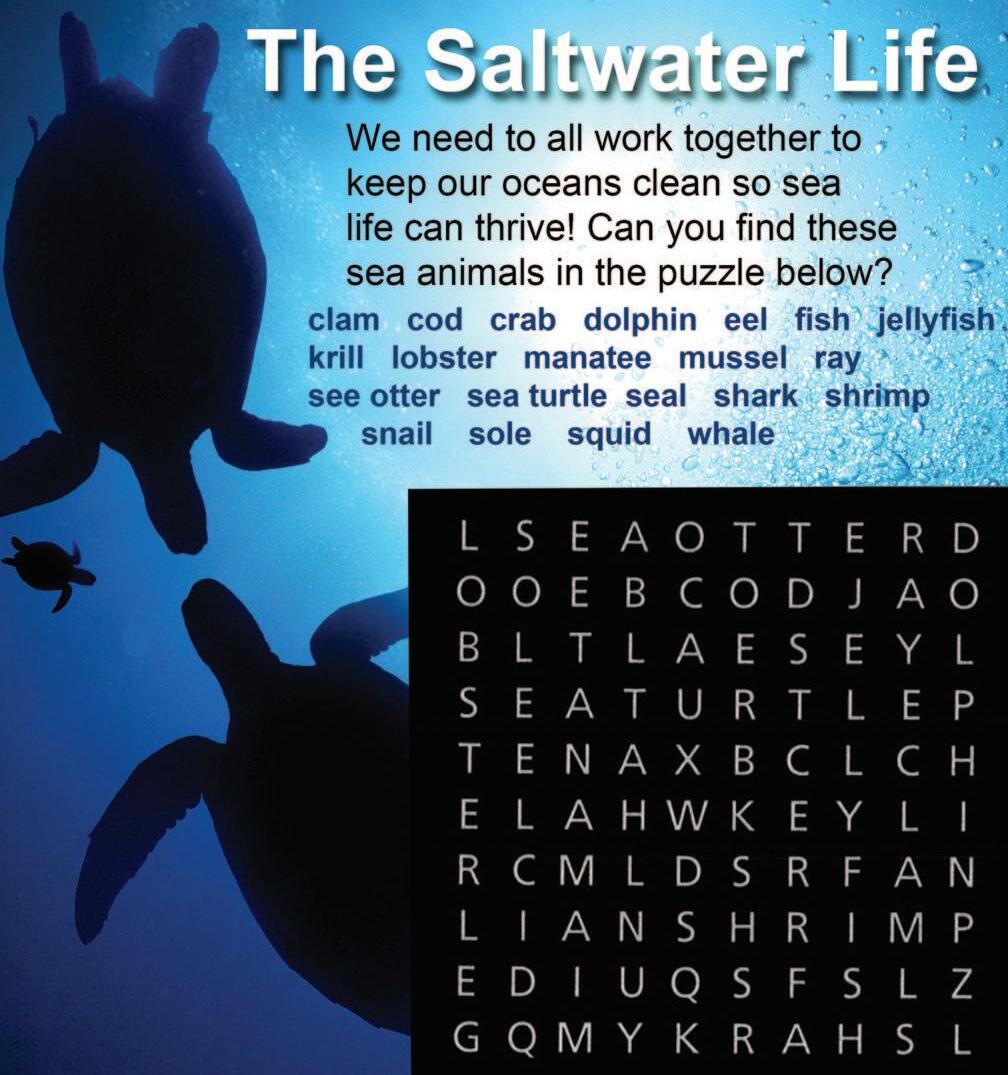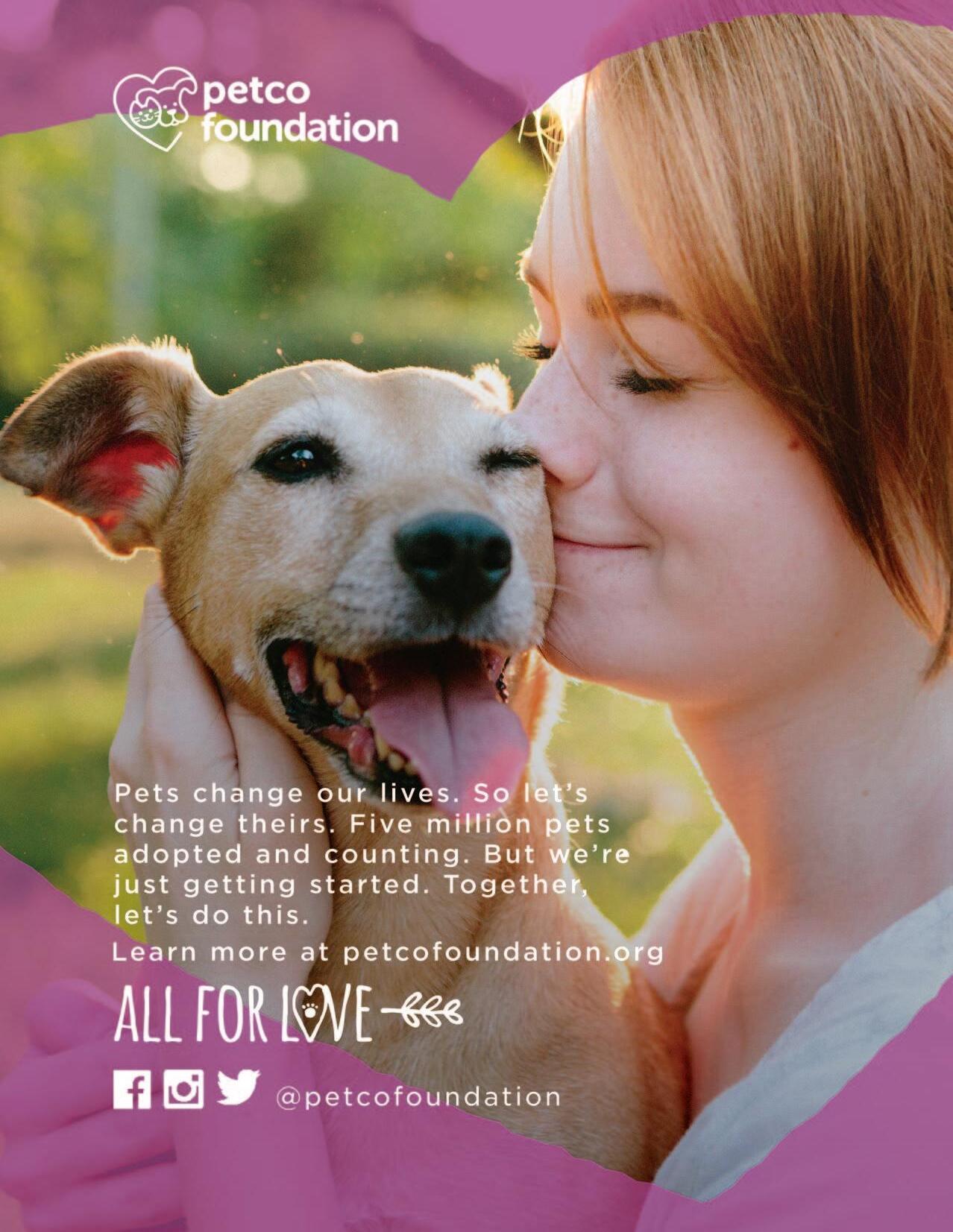
















Publisher: Keith Simmons
Editor-in-Chief: Dan Krosse
Managing Editor: Joe Elmore
Graphic Design: Heineman Design
Copy Editor: Teri Errico Griffis
Writers: Dan Krosse, Teri Errico Griffis, Ellie Whitcomb Payne, Helen Ravenel Hammond, Joe Elmore
Photographers: Vincent J. Musi, Marie Rodriguez, Jeanne Taylor, Ellie Whitcomb Payne, Dan Krosse, Graham Cerceo, Paul Mulkey, Mike Requidan, Nolan Schillerstrom
Cover Photo: Vincent J. Musi
Advertising Sales: Ted DeLoach
For inquiries regarding advertising, distribution or suggestions in Carolina Tails call (843) 352-9048 or ksimmons@charlestonanimalsociety.org.
2455 Remount Road, North Charleston, SC 29406 (843) 747-4849 www.CarolinaTails.org
President: Elizabeth Bradham
Vice President: Helen Pratt-Thomas
Vice President: Ann Long Merck
Vice President: Matt Watson, CPA, CVA
Secretary: Aussie Geer
Treasurer: Laurel Greer
Members of the
Kiara Barnett
Mary Black
Eugenia Burtschy
Hal Creel, Esq.
Andrea Ferguson
Gerri Greenwood
Hank Greer
Sarah Hamlin Hastings
Ellen Harley
Cynthia Hayes
Patricia Henley
Johnny Maybank
Summey
Joe Waring, Esq.
George “Pat” Waters
Peter Waters
Jeff Webster
Nancy Worsham
Tami Zerbst




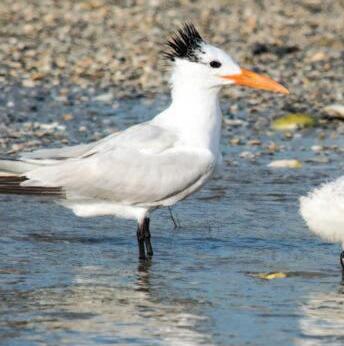
DEAR FRIENDS,
I think this issue is one of our most interesting and diverse so far, as you can tell from some of the topics listed below:
•Lowcountry birding tips from the Audubon Society
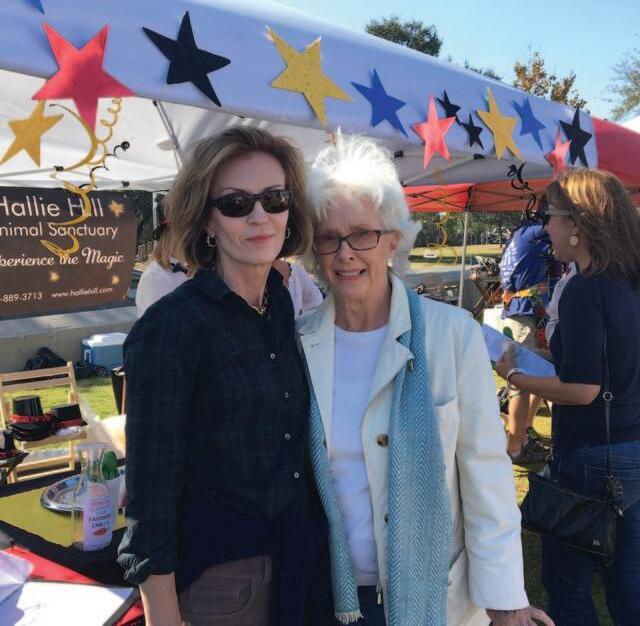
•Meet National Geographic photographer and Sullivan’s Island resident Vince Musi
•Learn about mobile chicken coops that can also fertilize your yard
•Can the color of your cat determine its behavior? See what new research shows!
•Speaking of cats, ever consider Toilet training one?
•Lessons learned from Hurricane Matthew regarding our state’s pets.
As this is my last letter, I want to thank everyone who has helped me become a better advocate for animals. I have been constantly humbled and inspired by the staff, employees, volunteers and board of Charleston Animal Society, whose professionalism and dedication are unparalleled within our community, and whose services have eased the suffering of many.
And I get to thank one person in particular, the person who started me on this journey many years ago. Her name is Helen McLeod Bradham. As the founder of Hallie Hill Animal Sanctuary, she has shown extraordinary leadership in raising the awareness of the need for greater animal welfare protections and guidelines. As the only sanctuary in the county, Hallie Hill works with Charleston Animal Society to maintain our No Kill status. When CAS has had a dog or cat that has suffered either medical or emotional trauma that makes it unavailable for immediate adoption, Hallie Hill has taken in these animals and given them the quiet, security, love and care that they need to get back on their feet. Just as some of us require a longer time to heal, the same holds true for dogs and cats. And just as we have social and medical services for elderly people, especially those in need, Hallie Hill offers the same type of services and care to our animals. As a result, Hallie Hill has been a critical link in the continuum of care for the animals in our community. And if we plan to achieve our goal of a No Kill South Carolina, we will need to find a way to duplicate Hallie Hill’s services in other communities across the state.
As I am sure you have guessed, Helen is my mother and we are pictured here together at the Chili Cook-off last November. I have already received my inheritance from Mom - that the worst offense is an unkindness and to always be aware of the needs of others. And as I have always had Hallie Hill graduates sharing my home, my day begins with happiness, joy and love, and ends with the promise of a peaceful sleep, with my friends in charge of our house’s security.
With much gratitude to all those who have helped me along the way,




It is definitely one of the most unique fundraisers Charleston Animal Society Gift Coordinator Kristen Lewis ever saw, “I thought it was great, it just made me smile.”
Kristen is talking about Casper’s “Bark Mitzvah.” Earlier this year, the Bichon Frise had his 13th birthday and for the occasion, his owner Mark Abrams, threw a “Bark Mitzvah,” a canine version of "the entrance into manhood" in the Jewish religion. In lieu of gifts, Mark asked for folks to make a contribution to Charleston Animal Society, raising hundreds of dollars. The Bark Mitzvah was such a hit, that Mark threw a second one in Connecticut for Casper, just before Casper passed away of old age.
Mark is thankful he held the Bark Mitzvahs before Casper passed, because this happy ending is only topped by the pair’s happy beginning.
In 2004, Mark was doing his floor exercises that he had to do every morning for his bad back when Charleston Animal Society's Director of Community Engagement, Kay Hyman, came on the news with the "pet of the day" that was up for adoption. He went to his job where he worked with disabled children and could not get the dog out of his mind. Unfortunately, Audrey had already been adopted before he could make it to the shelter.
Then came a surprise call two weeks later – when Mark was notified that a similar dog was available. He went to Charleston Animal Society as quickly as he could, and Casper, the little Bichon Frise snowball, jumped right onto his lap and took over his life, "Casper made a beeline for me; I will always be indebted to Charleston Animal Society."
Casper would continue to be Mark's kind, lovable companion for the next 13 years. Casper was his baby, encouraging Mark to get up in the morning. The white, furry snowball was the bridge for Mark to meet his neighbors on walks. And Casper was a friendly visitor to a retirement home, "He was so gentle; he would make everyone smile." Mazel tov!
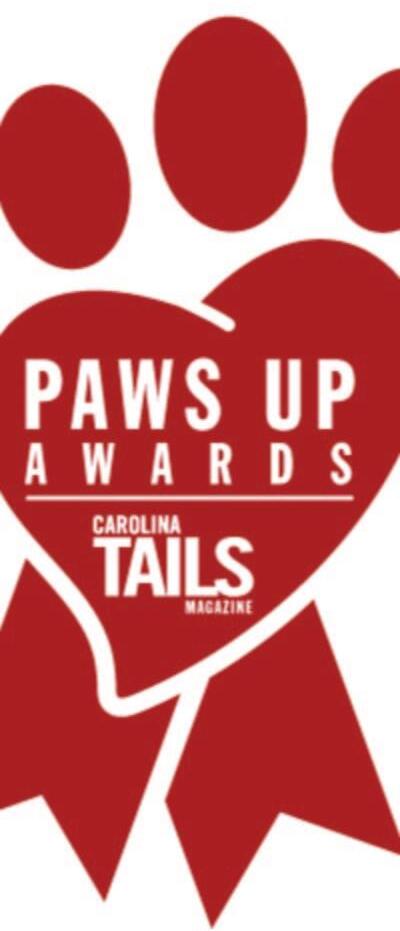
VOTE NOW FOR PAWS UP AWARDS!
Time is running out for you to vote for your favorite pet-friendly businesses and organizations in the Carolina Tails Paws Up Awards! Votes are already pouring in and will be tabulated on February 1st.
“What’s great about our awards is that if you don’t see your business nominated, you can do it very easily with a couple clicks of your mouse,” said Carolina Tails Publisher Keith Simmons. Categories include veterinarians, pet supply companies, cleaning companies, moving companies and more!
Voting is easy, just go to www.CarolinaTails.org and vote in as many categories as you would like. If you leave your email, we can keep you updated on the progress of the voting. The winners will be published in the Spring Edition of Carolina Tails. “There are so many people who care about our community animals, we were glad to find a way to recognize these great people and companies,” said Carolina Tails Editor-in-Chief Dan Krosse.
Charleston Animal Society honored four women who have dedicated countless hours to the care of our community cats.
In an event called the “Cat’s Meow,” these dedicated cat ladies were honored for their work that often goes unseen, but has a deep impact on the humane conditions of our community.
“These women not only feed and care for our cat colonies around Charleston County, but they also help trap hundreds of them each year for spays and neuters, which is helping to reduce the cat population to a more manageable level,” said Charleston Animal Society CEO Joe Elmore.
Those honored were:
· Diane Straney
· Dede Tyler
· Judi Tabor
· Julie Reynolds
“We want to make this a tradition and continue to honor people in our community who are taking the time to take care of our cats,” Elmore said. “It was a challenging decision to pick these four as our inaugural candidates because there are so many fine people to honor.”
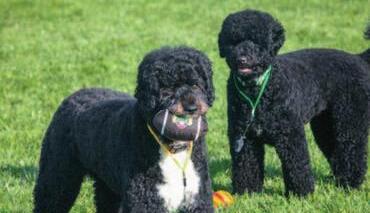
Bo and Sunny, the outgoing first pups of the USA, will be leaving the White House when President Obama departs on January 20th. The are both Portuguese Water Dogs and could often be seen playing on the White House Lawn.
As for incoming President Trump? By Carolina Tails’ deadline, the new President did not have any pets. But the folks at the Presidential Pet Museum are betting on a new first pet sometime soon, “We at the Presidential Pet Museum suspect this will quickly change when President-elect Trump gets to the White House. Why? Because every single presidency since Theodore Roosevelt has had a dog at the White House. So for that reason, we’re certain we’ll see a wagging tail soon after the inauguration.”
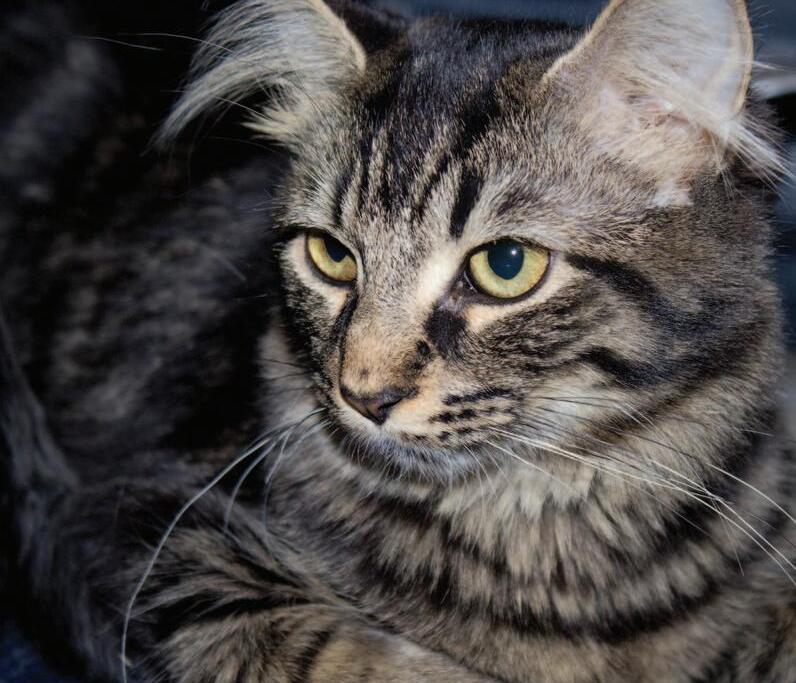
By Ellie Whitcomb Payne
IT’S NOT PROPER TO JUDGE A WOMAN by the color of her hair (insert blonde joke here), but what about our feline friends? A group of researchers recently found that coloring can in fact clue you in to the potential for aggressiveness in cats of certain hues. The findings, published in Journal of Applied Animal Welfare Science (Stelow, Bain, & Kass, 2015), seemed to indicate that calicos, tortoiseshells, black-and-white, and gray-and-white colored cats exhibit aggressive behavior more frequently than cats of different colors.
There are longstanding assumptions about cats based on appearance: torties and calicoes have attitude; black cats are wild and scary; orange cats are friendly. The online survey in the Stelow et al. (2015) study aimed to quantify these perceptions in direct relation to cat guardians’ observations about their pets’ behaviors. Respondents were asked to describe their cats using one of 10 color categories, then answer a series of questions about the cats’ actions in certain situations. The intent of the study was not shared with participants and, in the end, the statistical analysis included 1,274 cats from all over the world.
The respondents’ answers indicated that tortoiseshell, calico, and tortie females had a higher score in human aggression than all other females combined. Black-and-white males showed more aggressive behavior towards humans than all other males combined. Aggression while handling was observed more often with tabbys, calico/torties, and gray-and-white cats. Indoor or outdoor living conditions, being spayed or neutered, or living with other cats did not appear to have a bearing on behavior. Surprisingly, coat color did not link with aggression while at the veterinarian’s office in any significant way.
The researchers concluded that there may be some truth in the contention that the almost exclusively female calico tends to be hard to handle, but recognizes that while “coat colors may be associated with aggressive behavior in the cat… the differences are relatively minor.”
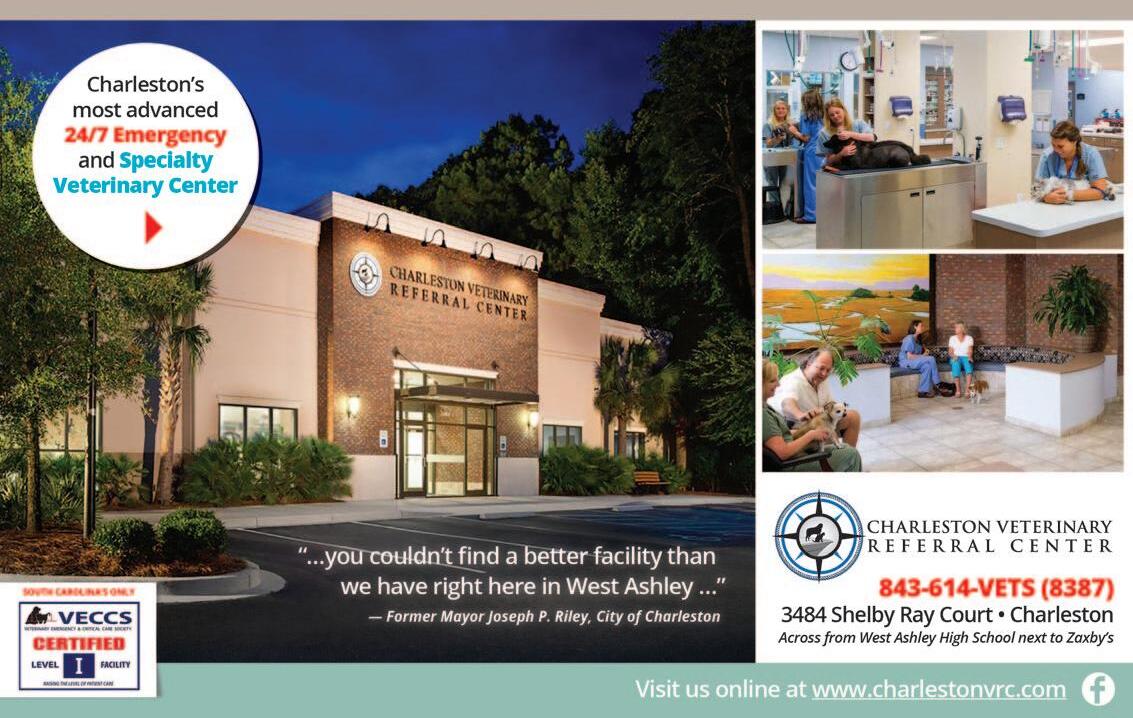


ON THE SURFACE, IT MIGHT SEEM A recent move by the Carriage Animal Temperature and Heat Index Committee in Charleston would make things better for carriage animals. But in reality, it will make things worse.
Under current law (as of December 2016), horses are only pulled from service if the temperature spikes to a sizzling 98°F or 125° heat index. There have to be two readings 15-minutes apart before tours on the hot downtown asphalt are halted. So, in the worst-case scenario (if the law is followed), horses are out in the heat for 15 minutes. Of course, this only happens if the law is followed. In the summer of 2015, Charleston Animal Society discovered that, even though the temperatures reached 98°F on 4 separate occasions, the horses were pulled only once.
Under the new proposal from the city committee, the heat threshold temperature drops to 95°F or 110° heat index. BUT, and this is a big but, the horses and mules have to stay out in the heat much longer, before they can be pulled. In a move to appease the carriage industry’s concerns about
potential lost revenue, the animals must keep working until there are four consecutive readings above the heat threshold -- that’s one HOUR. The temperatures could spike to 98°, 99° even 100°, with heat indices above 125° -- and they won’t be pulled unless there are 4 consecutive readings, 15 minutes apart. But if even one of those 4 readings dips below 95°, the cycle starts over and it will be at least another hour in the heat for the animals. (If pulled, the animals will be off the streets until there are two separate readings below 95° or 110° heat index.)
Charleston Animal Society’s representative on the committee voted against this proposal. Charleston Animal Society is requesting a comprehensive, peer-reviewed study of the Charleston carriage industry using a science-based approach. But that idea was shot down by the committee, which is tasked with making the industry more humane. It wasn’t even allowed to come up for a vote. “I can tell you right now we would never allow our animals to be part of a study with an animal rights group,” said Broderick Christoff who represents the carriage industry on the committee.
“Hearing this should set off alarm bells for anyone who truly cares about the welfare of horses,” said Charleston Animal Society CEO Joe Elmore. “It raises the question, what are these carriage companies hiding and why are they afraid of an independent study?”
One reason could be that these researchers would not rely on the data that is provided by horse carriage companies to the city; information such as a horse’s internal temperature after tours. Researchers would collect their own d ata and then make carriage tour recommendations based on scientific standards used at universities and research facilities around the world.
The City would not allow independent veterinarians to participate in the committee. Instead, they used the City’s veterinarian and the carriage horse company’s veterinarian to review the numbers, which have no scientific basis, to come to the “95°/110°” decision. Throughout the meeting, representatives from the City and the carriage industry both usedthe word ‘arbitrary,’ when it came to the temperature decision they were supporting, which may make it difficult to legally enforce.
As of this writing, Charleston Animal Society’s proposal for a research study has been endorsed by the Humane Society of the United States, and Atlanta-area Equine expert vet Kenneth Marcella, a prolific author and scientist on equines issues. The proposal is also under consideration by the Welfare and Public Policy Advisory Commission of the American Association of Equine Professionals, after having been recommended for endorsement by its subcommittee.
As of Carolina Tails December 2016 deadline, the temperature proposal still needs to be approved by the city’s Tourism Committee and City Council before it can be enforced. A comprehensive study would research a variety of factors including three main issues: •Temperature • Load • Traffic Congestion Learn more at: CharlestonAnimalSociety.org/humane-carriage-tours

Lowcountry resident Vince Musi has made a career of bringing animals to life on the pages of National Geographic.
BY DAN KROSSE PHOTOGRAPHY: VINCENT J. MUSI
Vince Musi has traveled the globe in search of photographs to brighten the pages of National Geographic for more than two decades. But Sullivan’s Island is the place he’s called home since 2004. He decided to move his family there shortly after his son Hunter returned from the hospital in Washington, D.C. As Musi was taking a photo of Hunter on a clear September morning, the first of two planes crashed into the World Trade Center. Just 54 minutes later, one would nose-dive into the Pentagon, five miles away from Musi and his wife Callie’s apartment building. “We began to search and really think about what kind of parents we would be and what kind of life we wanted for Hunter, and we chose Sullivan’s Island,” Musi said. His road to “Nat Geo” began as a sports photographer for the Pittsburgh Press, but Musi’s ultimate dream was to work for the National Geographic, the journalistic gold standard for photography. “It was always something I aspired to,” Musi said. “The [National Geographic] photographers made the photos I wanted to make and struggled to get published. I’d describe them as ‘one foot in the art world and one foot in the news world.’”
After a few freelance gigs working on books for National Geographic, Musi got his first “real” assignment photographing the Shenandoah River. Twenty-one years later, the magazine keeps on calling. With 11 National Geographic covers under his belt, Musi explains that each is a time capsule of his existence, “Each story represents a year of your life.” Between the research, the travel and the waiting for just-the-rightmoment—a photo assignment for National Geographic is incredibly immersive. But the man who’s gone underneath volcanoes, photographed the Arctic Circle and the ACE Basin here in the Lowcountry is humble when it comes to the “adventurer” label. “I look really good on paper. I’m much braver with a camera in my hands,” he said.
Musi is constantly surprised by the significance of National Geographic articles. “I get letters to this day from people because they learn something from an article that was published 20 years ago.” He said this kind of impact is the one thing he is most proud of as a photographer. “I’m not consciously out trying to save the world, but if I can get you to think about something,

raise questions about something, be curious about something, then that is great.”
Carolina Tails asked Musi how he “got the shot” on some of his most incredible images. “Photographin g ani mals is extremely challenging because I’m not trying to (humanize) them, but I’m trying to capture unique qualities that show their personality,” Musi explained.

“Azy is a gentle giant,” Musi told us of this 38-year-old orangutan that now lives in Indianapolis. Azy has been part of a collaborative effort between scientists and animals to explore cognition levels of different animals. “He can use a touch screen and is extraordinary,” Musi said. "Many times getting a shot takes days, but Azy’s took a morning. I caught this photograph in between his time on the touch screen.”

Musi’s proudest National Geographic cover is one that never made the cover in the USA: “The pig on the couch is my favorite. Nat Geo USA would not use it, but the Brazilian Nat Geo did use it and I was very happy.” Daisy Mae, a Vietnamese potbelly pig, was photographed in West St. Paul, Minnesota. Musi said getting into the minds of editors and their final decisions is something he has never been able to figure out.

“This is very much the kind of photo I like to make,” Musi said excitedly as he described getting this shot of a boy with his dog while doing a National Geographic article on the ACE Basin in South Carolina. “They were duck hunting on Bear Island and as we were traveling, I had the guy stop the truck and I got in the back with J.D. Cate and his dog Henry. When I took this, we were flying down the road. There’s not a piece about this photograph I would change.”

When National Geographic wanted a story on exotic pets, Musi was dispatched around the globe. “This cougar lived in the owner’s backyard in Florida and he is the only one who interacts with Sasha,” Musi said. To get the shot, Musi had to make a custom-sized cage for Mario Infante’s (the owner’s) backyard. “We make cages all the time,” Musi said. “I don’t want to die and I don’t want to see the animal or person get hurt.” Musi explains that 90% of the time he spends on his job is spent solving problems that will lead to getting the shot. “This photograph took several days. It was pouring rain. I was sitting in the cage waiting for it to happen,” he said. “It was a very humbling experience.”
“I’m not consciously out trying to save the world, but if I can get you to think about something, raise questions about something, be curious about something, then that is great.”
WHEN ASKED HOW ALL OF US CAN IMPROVE OUR PET SHOTS, MUSI GIVES US ADVICE STEERING US TOWARD SIMPLICITY:
•I’m big on eye contact. That is what I’m looking for.
•Look for the simplest background you can go with.
•Never stress out an animal. It always shows.
•Getting your pet’s photo should be fun for you and your pet.
•I’ve had great success using food as a reward.

Yes, this is a picture of a deer on a bed. Her own bed. Dillie lives with a veterinarian who rescued her in Canal Fulton, Ohio. “Dillie is one of the greatest animals I’ve ever been around,” Musi gushed. “She’s just very affectionate and beautiful. I would never want to have a deer but I would want to spend more time around Dillie.” This special deer, who is nearly blind, has her own bedroom on the second floor of the veterinarian’s home. Musi said that everyday Dillie would walk downstairs and head outside, sometimes for a swim in the family pool. “Also, she loves to eat spaghetti and you can watch her on a 24-hour webcam in her bedroom.”
(www.DillieDeer.com)
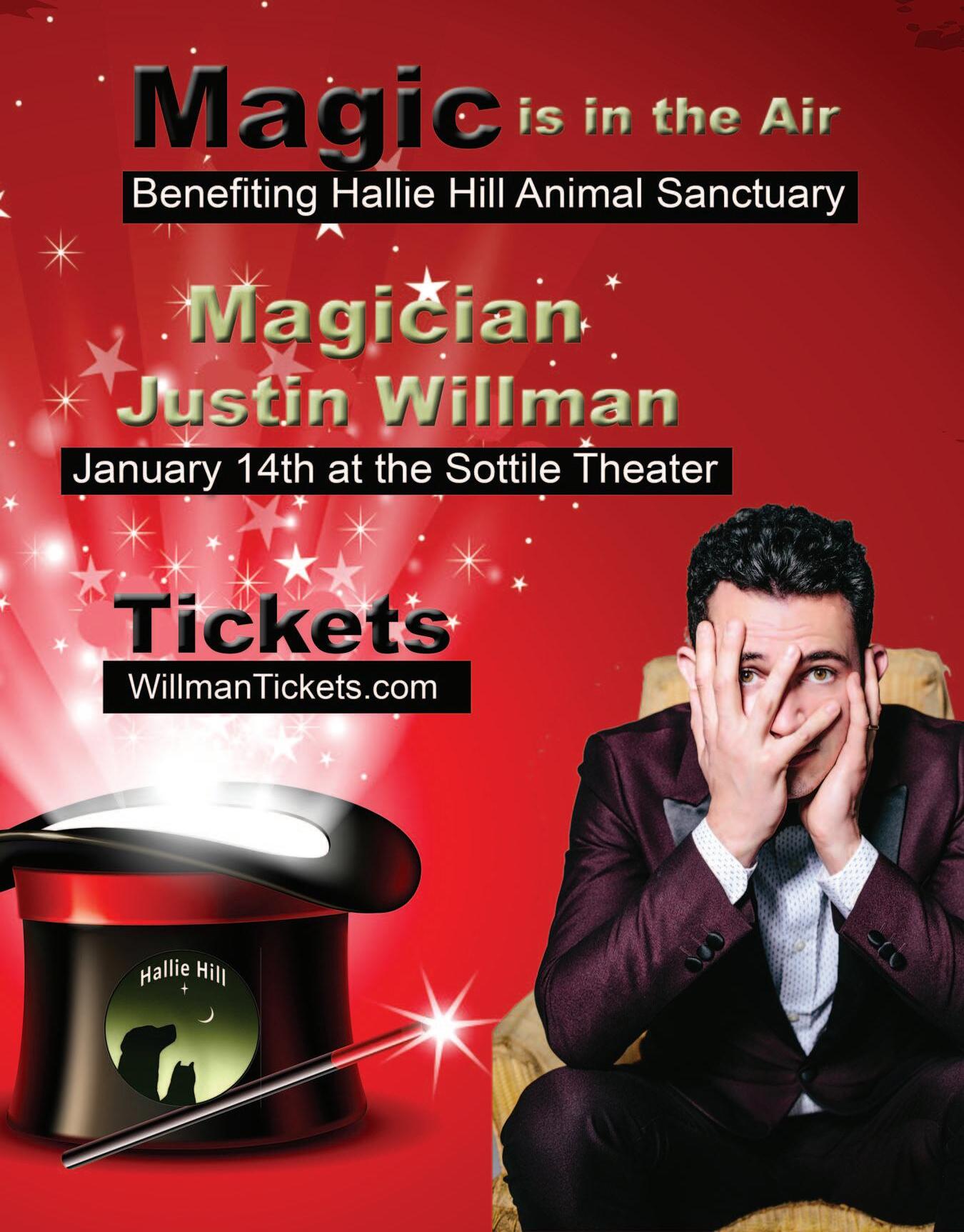
STORY & PHOTO
BY ELLIE WHITCOMB PAYNE
FRESH EGGS AND FERTILIZER - TWO reasons Rachel Patterson and her husband Dustin decided to add a few friendly fowl to the family. The Johns Island couple started keeping chickens about two years ago, using a chicken tractor design with some custom improvements for a very cool coop.
A chicken tractor is a moveable coop with an open bottom that allows its inhabitants to dig and fertilize freely on the ground. “We saw chicken tractors online and thought that it would be good to move it so they wouldn’t mess up one part of the yard,” says Rachel Patterson. The intention was to move it enough to reap the benefits of chicken foraging, and avoid destroying the grass under the coop. The Patterson’s unique design repurposes a camper shell from an old truck as a weathertight, metal roof covering. Directly underneath the roof sit three nesting boxes flanking one side. The camper shell windows lift-up to provide easy access to the freshly laid eggs. Inside features various platforms and ramps for the chickens to use, but mostly the birds just sleep when in the pen, says Rachel.
Every chicken tractor features a set of wheels to provide mobility, unless it is light enough to carry around. An August article in Modern Farmer by Brian Barth sheds some light on why chicken tractors have become popular. Moving the pen allows the birds fresh ground for foraging and is great for pest control and the fertilization of your soil. Barth explains the name “chicken tractor” is less a term to describe its mobility, and more for the fact that the chickens destroy the earth by digging in the ground under the rig. He recommends to move it every day if you’re looking to avoid dirt patches in your back yard.
“[The chickens] are pretty hard on your yard,” admits Rachel, adding that they ultimately decided to demobilize the pen. The damage wasn’t coming from the tractor design, though- it was the chickens free-living
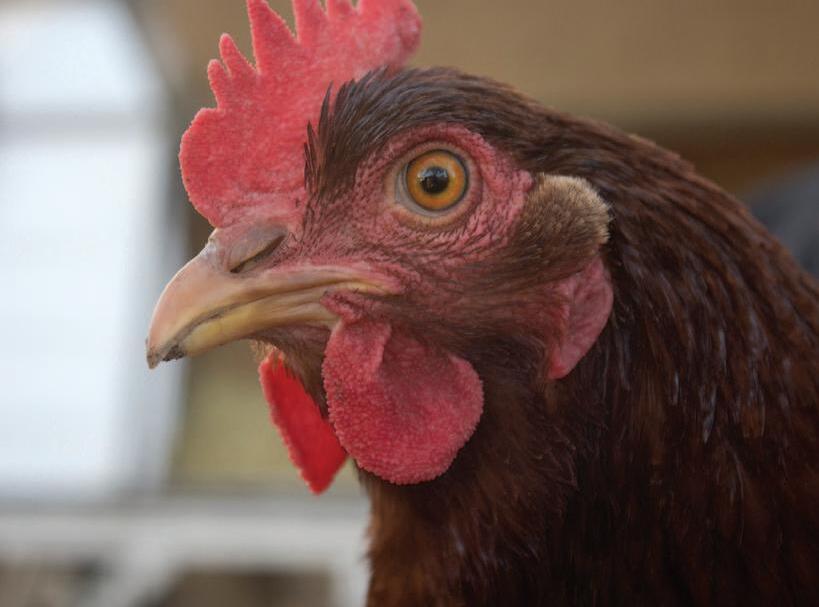
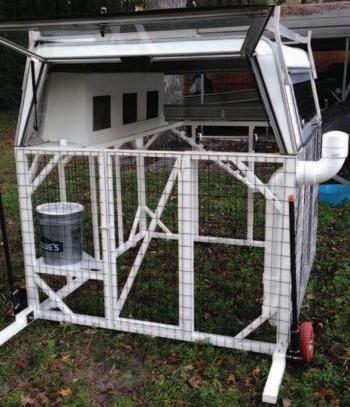
lifestyle. Originally, the Pattersons moved the pen once a month, which was sufficient because their chickens would free range during the day and only pen-up at night to sleep. It was during the free-range time when the worst damage occurred. “They were getting in my garden bed and digging up my flowers and plants, leaving large holes everywhere.” Ultimately, the chicken tractor was parked in a woodsy portion of the yard with additional fencing for free range, away from the flower beds. The nest boxes remain a handy way to access the eggs.
You live and you learn when you bring chickens into your home, and the Pattersons now have an easy routine caring for the fowl, including daily feeding and ‘cooping up,’ as well as weekly coop cleaning. And, of course, the delicious eggs.
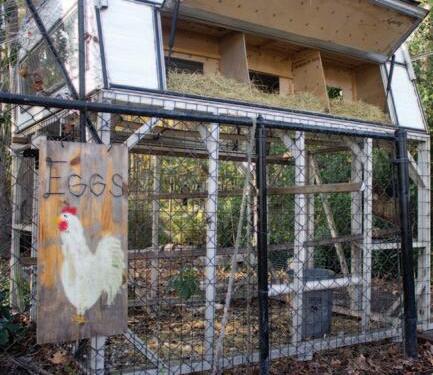
Be sure to check local ordinances or HOA rules on the keeping of chickens before setting up in your back yard.
Local Chicken Laws:
• Berkeley County (On a lot with at least 2/3 acre)
•City of Charleston (With written permission of neighbors living within 150 feet of chickens.)
•James Island (1 chicken per 2500sqft is allowed per parcel)
•Charleston County
•North Charleston
•Sullivan’s Island
•Mt. Pleasant (coop at least 18” in height)
NO CHICKENS
•Folly Beach
•Isle of Palms
•Goose Creek



BY JOE ELMORE, CHARLESTON ANIMAL SOCIETY CEO

AS WE LEARNED WITH HURRICANE Matthew, like we did with the “1,000 Year Flood” in October 2015, South Carolina’s Achilles Heel is its low-lying regions, specifically the Lowcountry and Pee Dee. The flooding that ensued in the aftermath of Hurricane Matthew wreaked havoc across South Carolina for weeks, before easing its horrific grip on thousands of families, including their pets, in the disaster-stricken areas.
The disaster caused millions of dollars of damage, but it could have been much worse. Thankfully, loss of life was minimal. However, our state must pursue aggressive and comprehens ive efforts to make provisions for families evacuating with their pets and for animals left behind in shelters prone to flooding and vulnerable to strong winds. Only three evacuation
shelters in the entire state were available for families with pets – one in Charleston County, Berkeley County and Spartanburg County. This is not nearly enough. There should have been dozens!
According to Red Cross caseworkers, 54% of the families who did not evacuate in Hurricane Katrina cited that they refused to leave their pets behind. Many others perished with their animals for probably the same reason.
In addition, animal shelters across the state, many in deplorable condition, are sitting ducks for disasters. During the 2015 historic flooding, State Emergency Management called on Charleston Animal Society to help respond to multiple organizations in dire need of help. The Animal Society immediately went into action to save numerous animals
This year was no different. Leading up to Hurricane Matthew’s impact, Charleston Animal Society, already overcrowded with animals, rolled out its emergency plan for both Charleston County and other areas of the state as part of its No Kill South Carolina initiative. Working with multiple partners, the Animal Society evacuated approximately 100 animals from its sheltering system, along with others, and placed another 100 animals into foster homes. This enabled Charleston Animal Society to become nimble enough to begin its rapid response to other animal shelters following the storm.
Working closely with State Emergency Management, the Animal Society’s Rapid Response Team deployed staff to several hard-hit counties, some of them multiple times. They included Horry County, Chesterfield County, Marion County, Dorchester County and Georgetown County. This was in addition to caring for nearly 1,000 animals in its own sheltering system.
All in all, Charleston Animal Society’s evacuation of animals and deployment of staff to assist with efforts to remove them from harm’s way led to 574 animals being saved, setting a historic precedent in South Carolina. The efforts of the organization’s staff and volunteers, working all hours of the day and night, were nothing less than heroic. Not only did the staff camp out in the shelter several nights to care for the animals, it provided veterinary support to Charleston County’s pet evacuation shelter at Burns Elementary School.
The Animal Society concluded the massive evacuation effort with another record-breaking adoption campaign on Saturday, October 22nd by placing 125 animals, many of them victims of the flooded areas, into homes.
Communities across South Carolina need to follow our model in Charleston County to better prepare for disasters by making it easier for families, including their animals, to get out of harm’s way. Communities also need to remember the most vulnerable animals, those in animal shelters prone to flooding, by including them in their emergency plans.
WEB EXTRA: See video of Charleston Animal Society’s emergency response at CarolinaTails.org.

BY TERI ERRICO GRIFFIS PHOTOGRAPHY: JEANNE TAYLOR / JTPETPICS.COM
WHEN FIREFIGHTER EMT STEVEN Michaels headed to work the day before Hurricane Matthew hit, he knew he would have a hand in saving the islands, local homes and possibly even lives. He never expected one of those lives would be a dog’s—or that he’d end up bringing it home.
It was the Friday before Matthew made direct contact with the Lowcountry and Michaels, who worked at Station 4 on Kiawah, was relocated to Station 5 on Johns Island. As he pulled up that morning, he saw a dog running around in front. “I didn’t think anything of it at first. He didn’t look stray so my first impression was, ‘Okay, somebody brought their dog to work.’ It was a hurricane and I could completely understand why,” Michaels said.
Eventually he settled into his day, and began asking about the dog. He heard that a family living in the neighborhood boarded up their home and left—without their pet. It struck a chord with Michaels. “He seemed extremely friendly, which was odd for a stray dog,” Michaels said of the Labrador mix. “You’d think he would be malnourished or dirty, but the dog was fairly clean. He was healthy. He looked like he was actually kept inside,” Michaels said. “So it was weird someone would leave a perfectly healthy dog behind during the storm.”
Charleston Animal Society CEO Joe Elmore agrees that there is no excuse for leaving a pet behind in a storm evacuation, but adds the state must do better to offer more shelters for people with pets. “We don’t know what factors led to the decision this family made to leave their dog behind, but we have to do better as a community to make more options available for pet owners.”
Michaels and his crew brought the dog indoors and though it was wellbehaved, they decided it best to keep it contained.
Right off the bat Michaels blurted out he should take the dog home. He was in the market for a dog—though he was hoping for a German Shepard. “If someone was going to leave him behind, obviously they don’t want him,” he rationalized. Michaels sent pictures of the dog to his girlfriend, with whom he has a 16-month old daughter. “My girlfriend pretty much gave me the green light.”
Michaels and his crew brought the dog indoors and though it was well-behaved, they decided it best to keep it contained. Because of all the emergency calls, the men created a makeshift leash so the dog didn’t get in the way of the truck coming and
going from the station. “We tied him up in the middle of the bay and he did great,” Michaels said. “He never once showed signs of aggression. He was very friendly. He never barked. It was very odd! When we’d come back he would come right up to us.”
Following nearly 50 hours of work, Michaels headed home and made the decision to take the dog with him. Aside from a broken set of blinds a few days into his stay, the dog behaved incredibly well— though Michaels did buy a crate in hopes of halting any further destruction. Surprisingly enough, the dog was cratetrained. It was also house broken and had zero separation issues.
This energetic lab has settled in nicely with Michaels and his family. They’re attending training classes and the dog is even showing genuine affection to Michaels. “He’ll come sit next to you and put his paw on you and keep pawing until you acknowledge him,” he laughs.
It took two weeks for Michaels to figure out a name for his new family member. While everyone encouraged him to call the dog Matthew, it was too easy. “I was looking into something like a Greek god or having to do with wind and rain, but in the end I ended up going with Chaser—short for stormchaser.”
THE 2016 CHILI COOK-OFF & OYSTER ROAST ON NOVEMBER
19th moved to a new venue at Riverfront Park in North Charleston attracting a bigger crowd than ever before. “We believe that 9,000 people participated as sponsors, teams, donors, judges and attendees,” said said Charleston Animal Society Chili Cook-off Coordinator Elena Lawson. 7,000 people came through the gates at Riverfront Park to enjoy all-you-can-eat chili and oysters.
More than $500,000 was raised for Charleston Animal Society's medical fund that helps thousands of animals every year. This year's event was also the most environmentally friendly with recycleable cups and spoons. Hundreds of pounds of waste was composted thanks to one of the cook-off’s sponsors, Food Waste Disposal.
More than 100 teams spread out across the park that runs along the Cooper River on the Old Navy Base. Chili was judged in three categories: Traditional, Unique and Best in Show. Team booths were also judged on Best Presentation.
Best in Show trophies went to Team Heron Reserve in the overall competition and ABC News 4 in the celebrity division. See all of the winners at CharlestonAnimalSociety.org/chili.
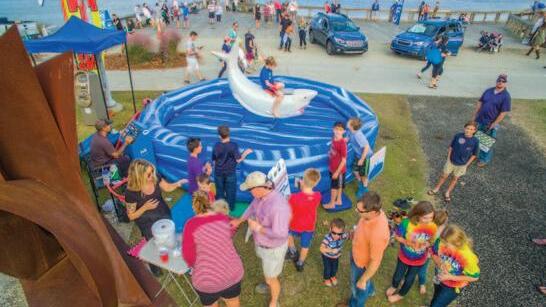



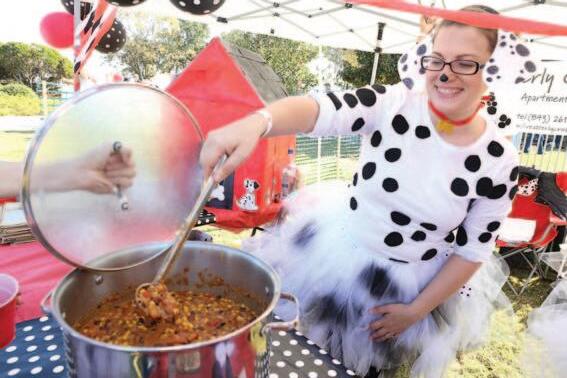
HERE’S A WAY TO JUMPSTART THE NEW YEAR: purchase a 2017 Firefighter Calendar benefiting Charleston Animal Society. 14 of the area’s hottest firefighters and one from Ocean City, NJ are featured in the calendar, each posing with a rescued animal. Caitlyn the dog is also appearing as one of the rescue models in the 2017 calendar.
An enthusiastic record setting number of ladies (and gentlemen) came out to witness the debut of the 2017 Firefighter Calendar at Memminger Auditorium, sponsored by Kia Country of Charleston, Tito’s Handmade Vodka, Anson Restaurant, Lowcountry Plastic Surgery Center and White.
“There are no words to describe how proud I am of this year’s firefighters, calendar committee and sponsors for bringing us our best calendar ever,” said Caroline Toepperwein, Firefighter Calendar Executive Producer. All proceeds from the party and subsequent calendar sales go to “Toby’s Fund,” Charleston Animal Society's Medical Fund, which treats injured, abused and abandoned animals.
2017 Calendars are on sale at www.CharlestonFirefighterCalendar.com.

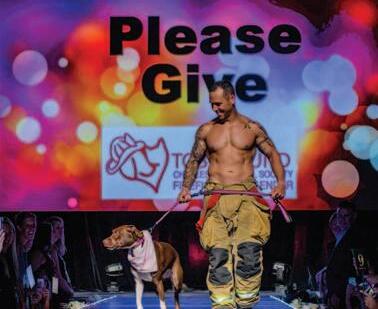




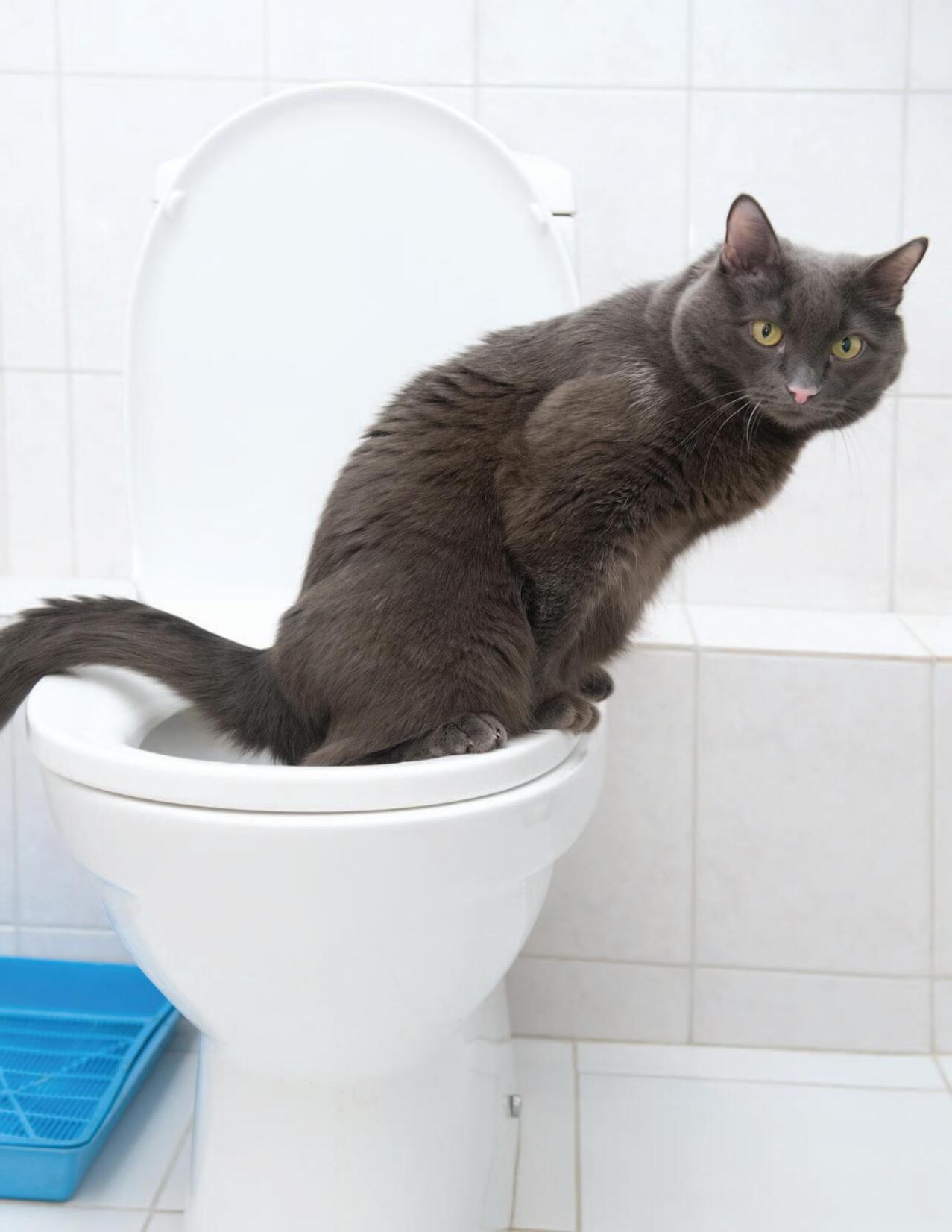
BY ELLIE WHITCOMB PAYNE
Ahh… to dream. Imagine a life with your cat where there is no litter to change. Never another argument over whose turn it is to clean up the cat poop. But is a litter-less life too lofty an aspiration for any admitted cat lover? Well, Carolina Tails found people everywhere are attempting toilet training with their cats, and some are succeeding. Here’s what you need to know if you think your cat is a good candidate for the commode.
Unfortunately, the vast majority of us should not consider toilet training cats. That’s because you should not flush cat feces if you use a municipal water system because cat feces can carry Toxoplasma gondii. (See sidebar for more information.) The dangerous parasite, though not harmful to healthy humans, can infect and kill marine animals. Sewage treatment does not destroy the parasite, and the contaminated water from your toilet can make its way into our waterways. An indoor cat is far less likely to carry the deadly parasite; however the chance of infection is still possible.
This leaves those of us who use a private septic system -- where flushing cat poop could be okay. You’ll want to make sure that your tank can handle the extra load and will not be stressed beyond its capabilities. Cat feces contain more hair than most human waste, which can clog drains and interfere with proper functioning. For these reasons, toilet training with several cats is not recommended. Also, never flush clay cat litter into your septic tank as it can greatly increase the amount of sludge in your tank, requiring more frequent, and costly, pumping.
Lastly, attitude is everything when deciding whether your cat is trainable, says C.C. Bourgeois, licensed trainer and owner of SouthPaw Pet Care and Wonder Dog University. “You want a cat that is interactive, curious and interested in learning,” she says, adding that you should test your pet’s willingness to cooperate before deciding to toilet train. A good place to start is with verbal target training and a high-five. By target training first with activities that come natural to your cat, you can gradually shape behavior, rewarding increasingly difficult actions.
You will continue using verbal target training as you shift focus to the bathroom, and eventually the toilet. “The best thing to train a
cat to do first is to go to a mat,” says Bourgeois. “Most cats like paper, so most will readily go to sit on it.” She explains to first put the mat on the floor next to the toilet. Taking baby-steps and rewarding with verbal cues and treats, gradually move the mat to higher surfaces until finally placing it on the toilet. The speed at which you can move the cat to the actual toilet lid, says Bourgeois, depends on the interactivity of your cat. “Eventually, you will replace the mat with the actual litter box on the pedestal,” says Bourgeois. At this point, you may want to consider placing a receptacle inside the toilet bowl that will contain litter, so your cat can learn to balance on the seat. Products available online, such as the CitiKitty Cat Toilet Training Kit, can help you take it from here. Note there is a risk of litter ending up in your bowl with these products, so be sure to use a biodegradable substrate. When you are not actively training, you should remove the mat/box, says Bourgeois, so your praise has more impact and desired actions do not go unrewarded.
Toilet training with cats is not easy. As you raise the mat, you may need to make the transitions slowly. “Know that you might have some setbacks, and its okay to take a step backward,” suggests Bourgeois. “These tactics, known as shaping, take some training chops.” Bourgeois admits she is not a big fan of toilet training cats, however, because it’s cumbersome. “Cats naturally bury feces, but we try to humanize them to make them more convenient for us.”
So, the bottom line? Toilet training a cat can be done and the payoff is huge. If you’re ready to get down and dirty, stand by with some disinfectant and a treat bag, but be warned of what success may look like: You, patiently waiting your turn, as Fluffy finishes her business on the potty.
While healthy humans (and cats) infected with the Toxoplasma gondii parasite generally never develop symptoms, Toxoplasmosis (the disease caused by Toxoplasma gondii infection) can cause severe problems for people with weakened immune systems. According to the CDC, Toxoplasmosis is transmitted by eating undercooked meat, ingesting oocysts found in cat feces, or from a pregnant woman to the fetus. Felines can ingest the parasite through contaminated meat.
BY CAITLIN KUCZKO, CPDT-KA
“SIT…EH EH….SIT, NOPE SIT…”
Does this sound familiar? Training a dog that has been labeled stubborn can be a difficult and daunting task. When a dog is called “stubborn,” what we typically mean is the dog is challenging to motivate and/or the dog is not biddable-easily obedient. So how do we train these stubborn dogs?
First and foremost, it is necessary to identify what motivates a dog. When you go to work, you expect to be rewarded adequately for your efforts. Similarly, dogs need their “paycheck.” Does your dog enjoy a game of fetch, playing tug, eating hot dogs, or perhaps sniffing a new spot? If so, you can use any and all of these as a motivator and proper reward. If not, identify your dog’s motivators by observing him throughout the day. What tasks does he engage in, what activities or behaviors do you see your dog performing?
When I adopted my dog Monty, I had high ambitions. Well, Monty had other plans; he was the first of many “stubborn” dogs that I would train. From my first training session with Monty, I discovered he did not know how to follow a lure, try

new things, or offer a behavior. In fact, for many of our training sessions he just sat and sat, until he would lie down. First, I made a list of his motivators. This list included playing with small cat toys and chicken nuggets; odd combination right?
After you identify your dog’s motivator, you need to start fresh and keep it simple. Remember to set your dog up for success, this way we build his confidence; a key ingredient in learning and trying new things. Training should be simple, fun, and positive! If your dog is stubborn when not performing a known behavior -- start fresh and keep it simple. Once you have the behavior you want, put it on cue, and then slowly add in distance, duration, and distractions.
If you have not already, teach your dog a marker. A marker is a unique indication
that informs the dog he has performed the correct behavior and earns the reward. A marker speeds up the learning process as the dog is able to make a connection between a specific behavior and earning the reward. A clicker or the verbal word “Yes” are the most commonly used markers, and for good reasons. For deaf dogs, a flashlight works well. To load or charge the marker you simply click (or say “yes”) and give your dog a treat. Repeat this twenty to thirty times and in a variety of positions.
Need help with your “stubborn” dog? Want to learn how to teach your dog to give eye contact and more? Come to our Levels Training program, and learn how to successfully train and work with your dog in a variety of locations and distraction levels. CharlestonAnimalSociety.org/dogtraining.
No matter how much we love our pets, there’s always the chance they will run into a legal situation. Attorney David Aylor took time to answer questions from our readers in this edition of Ask a Lawyer.
QUESTION: I am considering breaking up with my boyfriend and we share a dog who I feel is much closer to me. The ID chip is registered in my boyfriend's name and someone told me that "The ownership of a pet follows the chip." Is that true? Any advice on how I might be able to keep "Caboose" if we split?
–Kelly
DAVID AYLOR: Kelly, yes, a chip does provide one proof of ownership, but a judge would look to the cumulative evidence for a final determination of who receives the dog. Since the law doesn’t provide detailed precedent on these topics, and animals are still considered property per se, evidence of ownership is the primary factor in who maintains custody.
You’ll need to prove you’re the legal owner, not the better caregiver in order to win in most cases. The best way to prove legal ownership entails showing proof of ownership through some of the following examples of valid paperwork.
• Adoption application or sales contract: Dig through your files or ask the adoption center for paperwork.
•Veterinary records: Show that you’re financially responsible for your dog’s ongoing care by producing receipts.
• City licensing forms: Ask for a copy from the city you went through to buy your dog license.
• Microchip documents: If your dog is implanted with an identification chip, call the manufacturer’s registry for the records.
• Photo with the dog: Show a picture of you with your dog, to prove your possession.
QUESTION: I am a pet sitter and some of my clients have offered a stipend to cover care for their pets after they pass until another owner can be found. Is this enough or do they need to do more to transfer ownership to me?
–Jamie
David Aylor: In many states, owners who seek to maintain care for their pets once they are deceased usually provide a pet trust in their will or final plans. Pet Trusts provide written instructions to care for a decedent’s animal for the duration of its life after the owner has passed away. It seems like the stipend you are being offered is similar to payment for the position of someone who is a pet guardian.
According to the Am erican Bar Association, many factors should be considered when deciding how much to leave for a pet's care, not the least of which is the fact that pets are more expensive as they age. Some things to consider are: How many pets are included? What type of pets are they? How long are they expected to live? Does the pet guardian need funds to keep the pets in the manner to which they are accustomed? Is the pet guardian going to be compensated from the remaining funds after the pets’ pass, or should the pet guardian receive monthly or yearly compensation?
QUESTION: It seems like every time I walk my dog through my neighborhood, I see someone who is "above the law" and walking their pet without a leash, despite our town having a leash law. Are they breaking the law? Should I call the police? Any advice on how I can stop this from happening?
–Caroline
David Aylor: Leash laws vary by state and many laws are provided through local ordinances requiring dogs to be restrained when not confined to their owner's property. When an owner is walking his or her dog without a leash there are steps you can

take to notify officials. First, find the phone number for animal control. You usually report leash law violations to your city or county’s animal control department. If the person is out walking their dog off the leash, then check if you can identify the owner. Your animal control will need an address in order to reach out to the animal owner. Once the violation is reported an animal control official will investigate and make a determination in regards to the outcome of your complaint. Finally, as a “good neighbor,” you may want to give the person a chance to correct their bad leash habits with a friendly reminder, before contacting animal control.

If you have a legal question regarding pets, write us at CarolinaTails@CharlestonAnimalSociety.org and we will try and get it answered for you.
BY TERI ERRICO GRIFFIS
PHOTOS BY GRAHAM CERCEO AND ALDWIN ROMAN
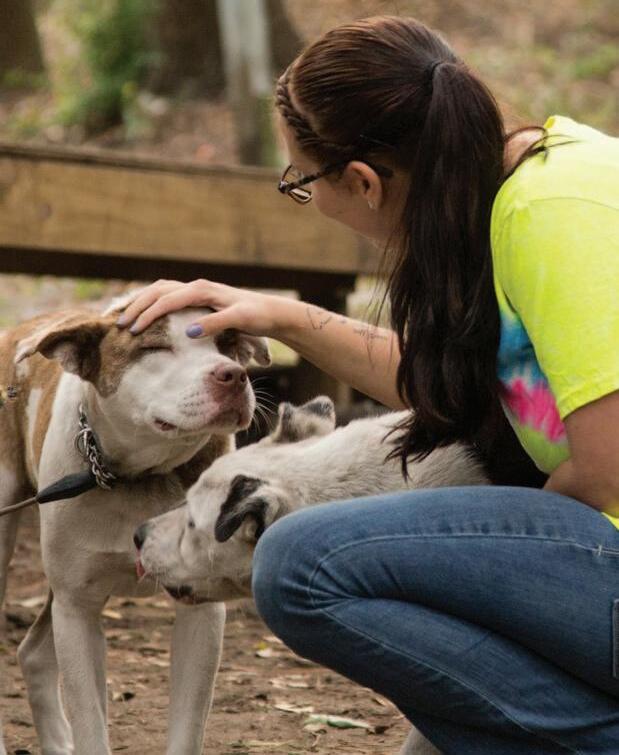
It’s an experience you need to see to understand. Watching dogs who were once chained to trees, now roaming free and safe, tongues and tails wagging, jumping around in a newly built, fenced-in pen— warms your heart. And as rewarding as the experience was for the dogs, it was just as rewarding for those who personally built a new life for them.
Pets for Life is a program at Charleston Animal Society that has so far built three fences for Lowcountry families, the latest of which helped a mother and son on Wadmalaw Island this past November. Animal Control had been called out in response to two dogs and a litter of puppies running loose. It turned out the owners were overwhelmed and, hoping to help, the Sherifff asked Aldwin Roman with Charleston Animal Society to meet with them. “They didn’t know about getting their pets spayed and neutered, and they didn’t have any transportation to get their pets to the shelter,” Roman explains. To alleviate some of their burden, the owners relinquished all but one of the puppies (which were soon adopted!). Then the shelter spayed, neutered and microchipped the remaining dogs to prevent a reocurrence.
Roman regularly checked in with the family—but was disheartened to visit later on and see the dogs chained up. “The owners were trying to comply with the law and not get in trouble for having their dogs loose, but now they have dogs who are used to being able to roam free,” he said. “Obviously dogs on chains is not great for their behavior. It inhibits them. They get tangled.” The dogs also fought often in their new restraints. Determined to find a solution that would allow these dogs to be safe and still enjoy their freedom, Roman asked if he could build a fence.
“A fence gives the dogs the ability to roam and gives the owner a place to safely play with their pet without worrying about the hazard of a chain,” he explains. So Roman along with 15 other Pets for Life employees and volunteers came out to build the family a fence. For four hours, they measured, dug holes, placed posts,

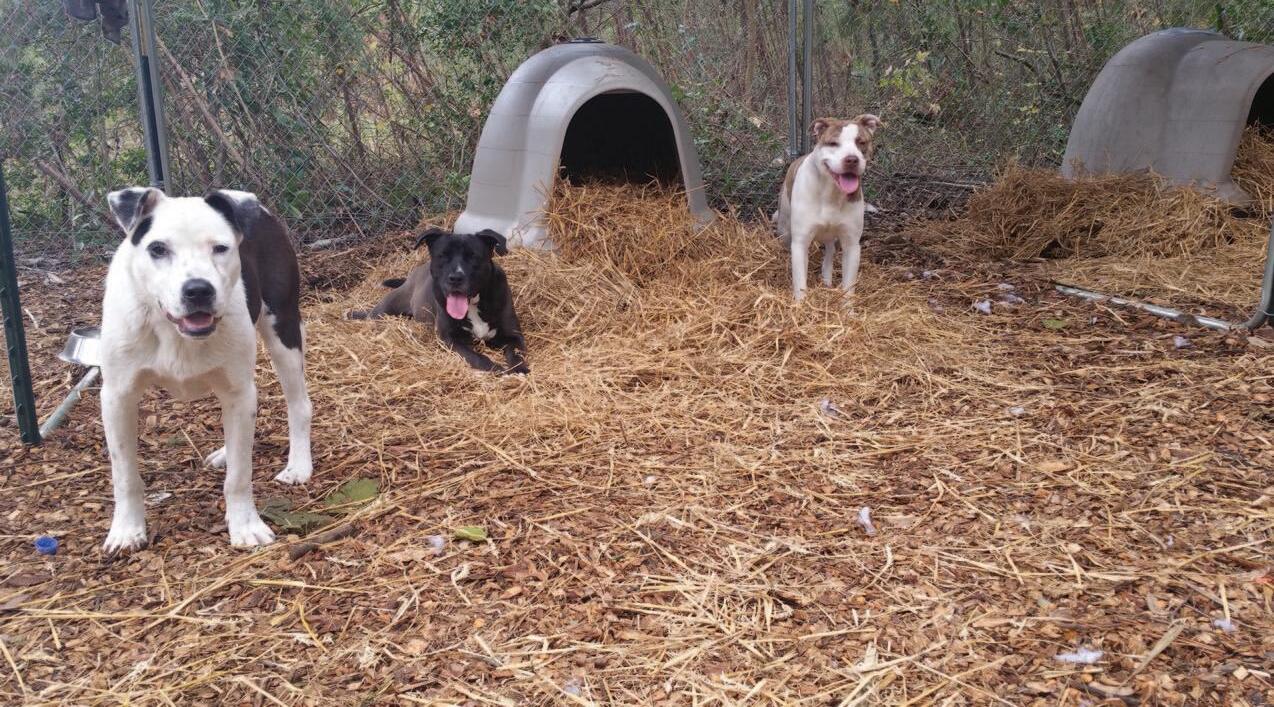
secured wiring and laid mulch (donated and delivered by Winthrop Tree Service on James Island). The 1,800-SF lot included three dog houses, overhead canopies for shelter, water and food bowls, and toys. It was incredible how the dynamic of the dogs changed the moment they ran free again in their new space.
Kristin Kifer, Outreach Specialist with Charleston Animal Society, originally thought up the idea of building pet fences and couldn’t have been more excited to be at the recent build. For her, it’s all about creating personal relationships with the families. “We help families so that they can become closer to their pets by providing them with a place to run and play,” she explains. “In turn, that allows us to establish a relationship with the family and we spend a lot of time in the neighborhoods getting to know the residents.” Kifer loves being a part of these families, and in fact, has been accepted into many of theirs.
“We have one client who due to a stroke is confined to a wheelchair, so every day we go by his house and give fresh water and food to his pets,” Kifer adds. “He loves his dogs and they are his life, so it’s important we keep them together.”
“There’s a consistency we provide for people being there each week, for the sake of the animal and the community,” Roman says. Ideally, he would like to host weekly builds—but with that comes the need for resources (about $800 in cost each) and volunteers. Pets for Life’s eventual goal is to have companies sponsor a build and come out to help.
Sometimes we’re quick to judge pet owners. They leave their dogs outside. They haven’t spayed or neutered them. We assume negligence, but often the reality goes deeper. Families love their pets, but not everyone has unlimited funds, proper pet education or access to necessary resources. Instead of removing the pets, however, Charleston Animal Society launched its Pets for Life program that seeks to educate the community and build relationships with pet owners so they can keep their pets—and keep them healthy and safe.
Pets for Life is a program at Charleston Animal Society that has so far built three fences for Lowcountry families,
Pets for Life is part of a nationwide effort funded by the Humane Society of the United States (HSUS), and in March 2014 Charleston Animal Society began their own program. “It’s a targeted, strategic outreach program,” says Roman, Anti-cruelty and Outreach Director with the shelter. “We did an assessment throughout the entire county as far as population, estimated pets in certain areas, access to vet resources, pet stores, crime rates, average price of rent. We look at it all and decide where to target.” The Pets for Life Team started in the 29405 area code (North Charleston), with an end goal to set up additional programs throughout Wadmalaw, Ravenel and other areas in need.
“You start on one block and go to every single house and work your way out from that area. The concept is to talk to people about their pets, see what’s going on in the community and offer resources, to keep these pets out of the shelter and with their families” Roman explains.
WOULD YOU LIKE TO SPONSOR A FENCE BUILD?
Contact Aldwin Roman (843) 637-9524
aroman@charlestonanimalsociety.org
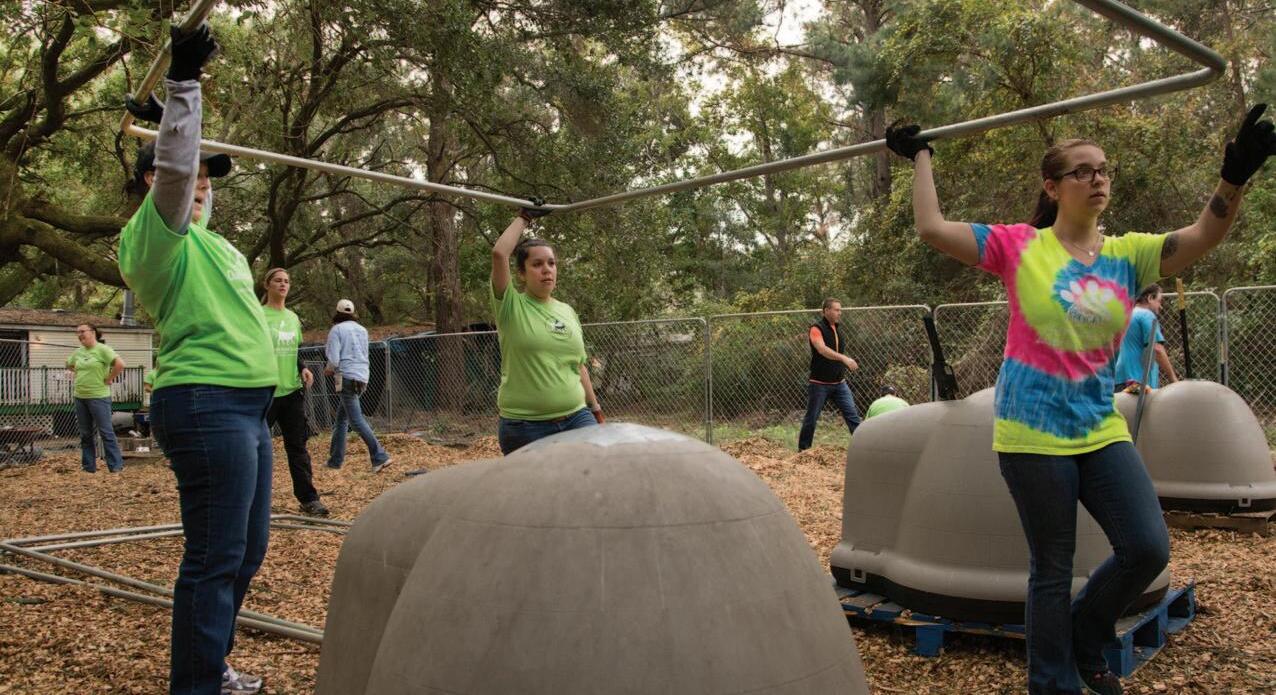

BY HELEN RAVENEL HAMMOND
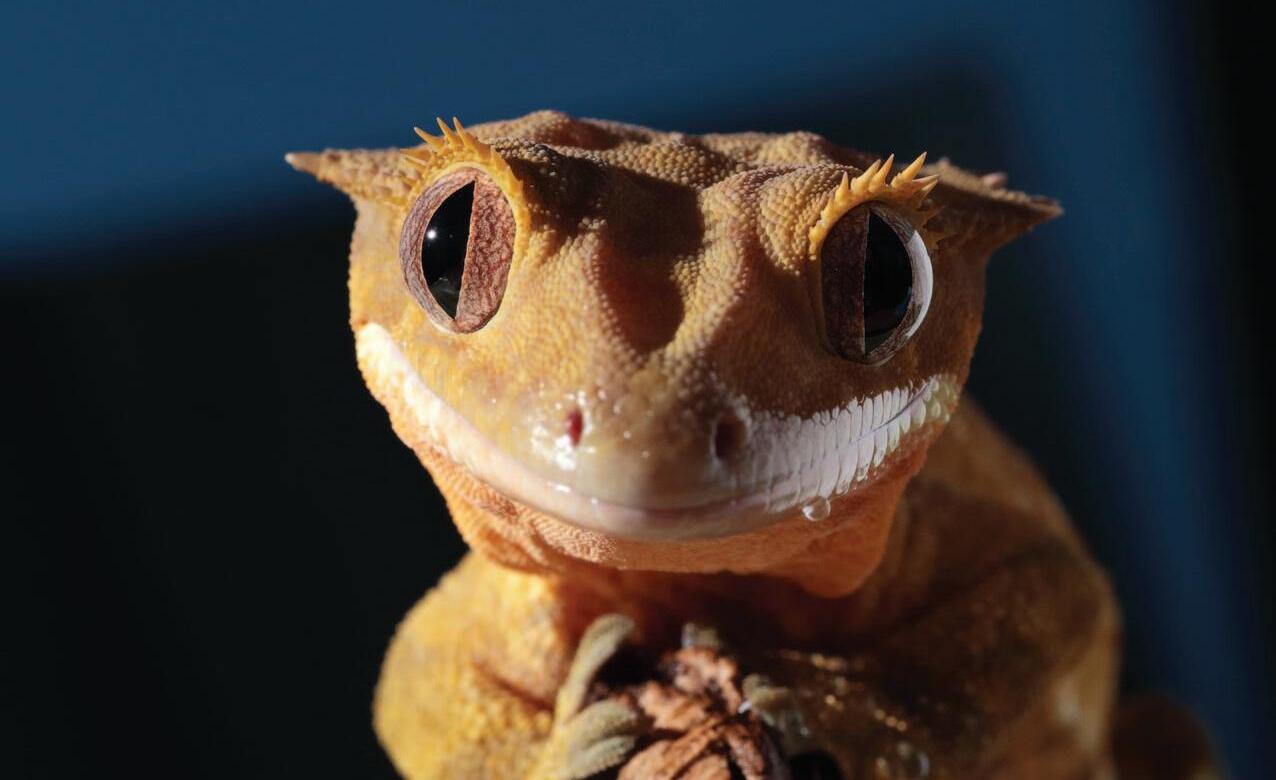
SO, YOU THINK YOU WANT TO GET A lizards as a pet? Dr. Katie Rainwater from Exotic Vet Care says that there quite a few things to consider before bringing a scaly companion home.
Lizards are not different breeds, like dogs and cats, but wholly genetically different species of animals. They are as different from each other as cardinals are from pelicans, she says. “Green iguanas and some species of chameleons are different kinds of lizards commonly seen in the pet trade; also popular in the pet trade are bearded dragons, leopard geckos, crested geckos, blue-tongued skinks, monitor lizards and Chinese water dragons to name a few,” she explains.
Interested owners must consider quite a few things before investing in one, Dr. Rainwater warns, advising anyone considering a reptile pet to read at least five sources of information (online care sheets, books, etc.) beforehand. The cost is highly variable depending on the species and whether it was wild caught or captive bred. Your new friend will cost anywhere from $35 to hundreds or more depending on the species.
According to Dr. Rainwater, most lizards are fairly long lived. Chameleons are on the shorter end of the spectrum at 6-8 years,
but leopard geckos and iguanas can make it to their 20's. It’s important to note, they can be carriers of salmonella bacteria, so any child owning one needs to be reminded to use good hygiene practices.
Darby Cameron, mother of three, gave in to her daughter’s birthday wish for a gecko in March 2015. Mollie had researched for months about how to care for it, and serendipitously, a father of a student at her school was a breeder. After the breeder gave some materials and instructions, two geckos made their way home. But, this slithering family quickly grew. “We now have one tank with Sharkey, the original male, one tank with Izzy, the original female, plus one offspring; one tank with two siblings on one side and one older sibling on the other side,” she notes. “Riley, my son, has built walls and structures with Legos. They feed them meal worms. Riley is trying to 'raise' meal worms too because it is expensive to buy them all the time.”
The bigger geckos eat 3-6 mealworms every few days; the smaller ones eat 3-4. The setup is expensive at first because you need a large enough tank, shelter, somewhere moist to go for shedding, a heat mat and/or lamp and a thermometer.
The Cameron children are obviously
responsible pet owners, but Dr. Rainwater warns that lizards are not recommended as pets for children unless the children are very responsible or the parents are willing to take the pets on as their own when the children go away to college.
Etta Simons remembers loving her iguana, Siegfried, which she bought at a pet store when she was in high school. With green and bluish coloring around his neck, Siegfried would lie in the sun and snooze in his aquarium in front of the windows in her room. She had a Ficus tree in her room, which she fed him. “He was just a chilled out lizard and watching him eat and climb in the tree was just fun," she said of her unusual pet.
Dr. Rainwater concludes, “Good veterinary care is important. Making sure they are not carrying parasites, discussing husbandry details, and addressing current or potential health problems are all part of the veterinary care we provide to reptiles and their owners,” she says. “The vast majority of problems we see in captive lizards are preventable with appropriate care, so we strongly recommend to have new lizards seen early so that we can get them off on the right footing and help give them the best chance for a long and healthy life."

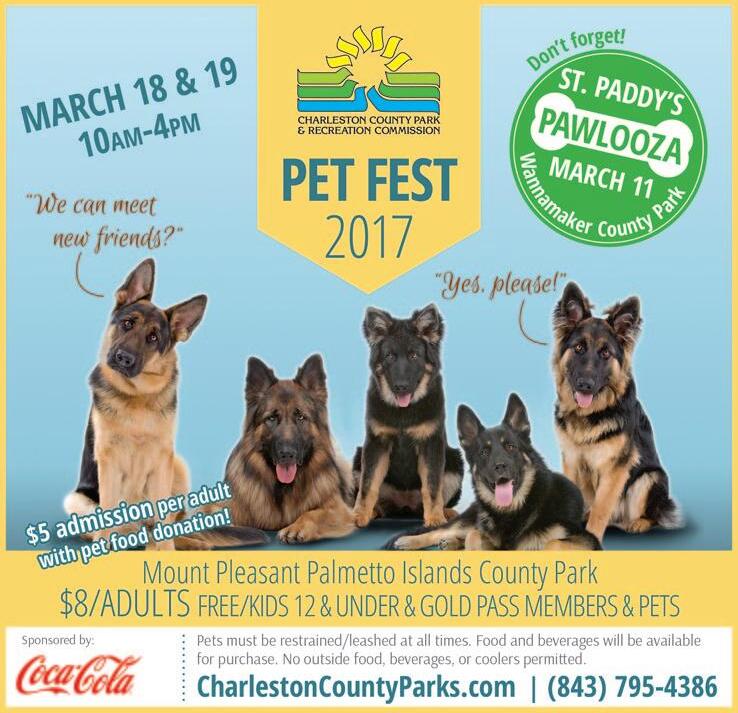


EDITOR’S NOTE: CAROLINA TAILS WRITER HELEN RAVENEL HAMMOND HAS HIT A HOME RUN WITH THIS VALENTINE’S DAY PLAN THAT INCLUDES YOU, YOUR SWEETIE AND YOUR POOCH.

Before you step out with your dog on Valentine’s Day he’s got to look good. That’s why we suggest a seersucker dog bow tie collar from Charleston Krewe.

OPTION B FOR CAT OWNERS:
Order in and stay at home for a quiet night. Get some catnip and entertainment will be guaranteed.

Everyone’s heading out on the town tonight. You and your Valentine are packing up Fido and going to one of Charleston’s many dog-friendly restaurants…maybe Fuel? East Bay Deli? Or Red’s? If you want to really be romantic, all of you can take a picnic to the beach.

STEP 3:
To top the evening off, and to remember it forever, take your Valentine to Wine and Design for “Paint Your Pet” night (located in Mt. Pleasant, West Ashley and Summerville).
MUZZLES HAVE ALWAYS BEEN CONTROVERSIAL. NOW A NEW EFFORT’S UNDERWAY TRYING TO CHANGE THEIR IMAGE.
BY ELLIE WHITCOMB PAYNE
AT Charleston Animal Society, exploration stations offer young dogs opportunities to experience different items, like nail clippers and stethoscopes, in a non-threatening environment. One of these stations features the basket muzzle. “Often, owners are taken aback when we introduce the muzzle training with their puppies,” says Caitllin Kuczko, CPDT-KA, a licensed dog trainer who runs the organization’s Canine College. Kuczko says you never know when familiarity with a muzzle might come in handy, such as being sheltered with your pet during an emergency like a hurricane.
Captain came to Charleston Animal Society abused and emaciated. After observation within the shelter, a family adopted him only to quickly return him after two attacks on other animals. Donya Satriale, a behaviorist with Charleston Animal Society, decided to take in the nervous and untrained American bulldog mix. Satriale praises the muzzle as the saving grace that allowed her to safely, and cautiously, socialize the pup. Using the tool in conjunction with behavior training over the span of a year,
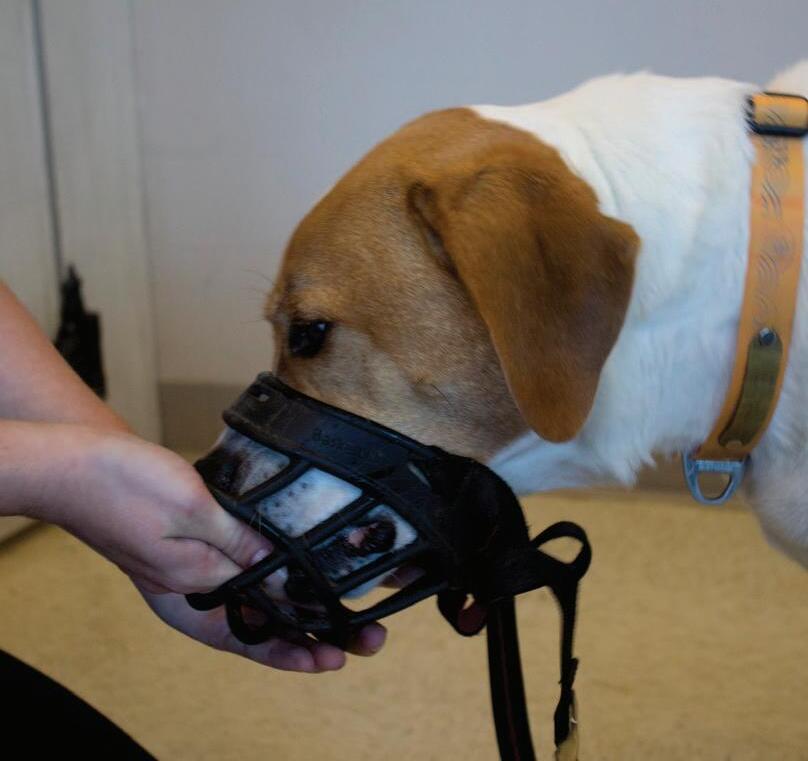
Satriale was able to gradually desensitize Captain to other dogs and cats, without the added risk associated with his bite history. Captain’s experience demonstrates that muzzles are not solutions on its own, but tools to help reach desired behavioral goals. “You can’t use a muzzle to make a dog into something he is not. I think the key should be to understand your dog’s stressors and not put him in situations where he would be dangerous to himself or others,” emphasizes Satriale. She adds that Captain “will never be a dog-park dog, but, because of training with the help of the muzzle, he is able to be around other dogs without being reactive anymore.”
Through education, San Francisco based nonprofit The Muzzle Up! Project aims to change public perception about the use of muzzles. The founder, Maureen Backman, MS, CTC, PCT-A, hosts training sessions all over the country on the correct use of basket muzzles. She notes that muzzles are still somewhat of a touchy subject, even among people who are knowledgeable about training and advocate animal welfare. “Right now, muzzles are seen as a last-
minute solution for a vicious dog that may be biting,” says Backman. “Instead, my goal is for people to see muzzles as a training tool just as they would see a front-leading harness.” She, like Kuczko, also believes in early introduction so that in an emergency, if a muzzle is needed, it does not add undue stress. Backman even encourages people to decorate their muzzles to make them appear more friendly.
Critics worry that the muzzle can be misused as a cure-all for bad behavior. Pearl Sutton, Senior Director of Animal Services at Charleston Animal Society, warns that muzzles are not crate replacements. “You can’t trust a muzzle completely. Dogs could slip out of one at the most inappropriate time,” she cautions. She agrees that basket muzzles can be helpful, but other types, such as barrel muzzles that don’t allow the dog to open its mouth, can be dangerous. Muzzles should never be used without proper training and a muzzled dog should not be left unsupervised. If you’re thinking about using one on your pet, please speak with your veterinarian or licensed dog trainer before purchase.
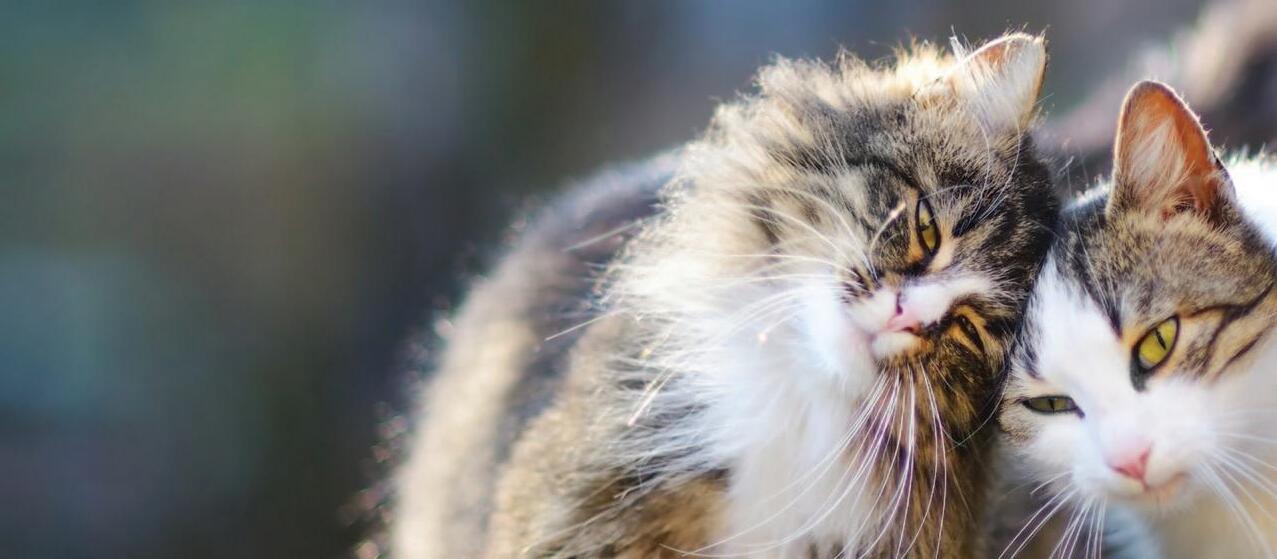
Charleston Animal Society and Carolina Tails want to always promote the best habits for animal care possible and seeing your veterinarian regularly is key to having a happy, healthy animal.

Saddleback Mobile Veterinary Service (843) 718-4299
Mobile
All Creatures Veterinary Clinic (843) 579-0030
224 Calhoun St, Charleston, SC 29401
Patrick Veterinary Clinic (843) 722-4470
667 Meeting St, Charleston, SC 29403
Charleston Harbor Veterinarians (843) 410-8290
280 Rutledge Ave, Charleston, SC 29403
Olde Towne Veterinary Clinic (843) 501-9812
17 Pinckney St, Charleston, SC 29401
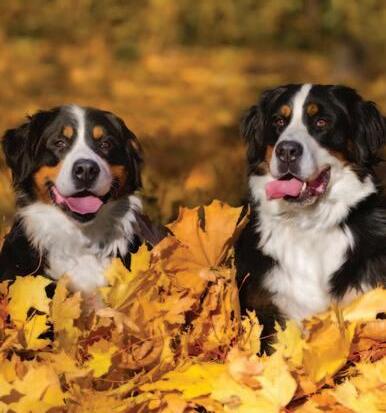
Air Harbor Veterinary Clinic (843) 556-5252
1925 Savannah Hwy, Charleston, SC 29407
Bees Ferry Veterinary Hospital (843) 769-6784
3422 Shelby Ray Ct, Charleston, SC 29414
West Ashley Veterinary Clinic (843) 571-7095
840 St Andrews Blvd, Charleston, SC 29407
Animal Care Center (843) 556-9993
1662 Savannah Hwy #135, Charleston, SC 29407
Animal Medical West (843) 766-7387
704 Orleans Rd, Charleston, SC 29407
Charleston Veterinary Referral Center (843) 614-8387
3484 Shelby Ray Ct, Charleston, SC 29414
VCA Charles Towne Animal Hospital (843) 571-4291
850 Savannah Highway Charleston, SC 29407
Banfield Pet Hospital (843) 766-7724
2076 Sam Rittenberg Blvd, Charleston, SC 29407
Animal Hospital of North Charleston (843) 352-8404
8389 Dorchester Rd, North Charleston, SC 29418
Lowcountry Pet Wellness Clinic (843) 556-7387
5900 Rivers Ave, Unit D-1, North Charleston, SC 29406
Veterinary Specialty Care (843) 793-2161
3163 West Montague Ave, North Charleston, SC 29418
Dorchester Veterinary Hospital (843) 552-0259
5617 Dorchester Rd, North Charleston, SC 29418
Coastal Carolina Veterinary Specialists (843) 747-1507
3163 W Montague Ave, North Charleston, SC 29418
Charleston Heights Veterinary Clinic (843) 554-4361
2124 Dorchester Rd, North Charleston, SC 29405
Northwoods Veterinary Clinic (843) 553-0441
8320 Rivers Ave, North Charleston, SC 29406
The Animal Hospital of North Charleston (843) 608-8948
8389 Dorchester Rd, North Charleston, SC 29418
Banfield Pet Hospital (843) 797-4677
7620 Rivers Ave, Charleston, SC 29406

Birds and Exotic Animal Care (843) 216-8387
814 Johnnie Dodds Blvd, Mount Pleasant, SC 29464
East Cooper Animal Hospital (843) 884-6171
993 Johnnie Dodds Blvd, Mount Pleasant, SC 29464
Island Veterinary Care (843) 628-1941 Mobile
Mount Pleasant Animal Hospital (843) 884-4921
1213 Ben Sawyer Blvd, Mount Pleasant, SC 29464
Pet Vet Animal Hospital (843) 416-9304
307 Mill St, Mount Pleasant, SC 29464
Shuler Animal Hospital (843) 884-4494
1769 Highway 17 N, Mount Pleasant, SC 29464
Veterinary Specialty Care (843) 216-7554
985 Johnnie Dodds Blvd, Mount Pleasant, SC 29464
Advanced Animal Care of Mount Pleasant (843) 884-9838
3373 S Morgans Point Rd, Mount Pleasant, SC 29466
Animal Eye Care of the Lowcountry (843) 881-2242
1131 Queensborough Blvd Suite 100, Mount Pleasant, SC 29464
Animal Medical Center of Mt. Pleasant (843) 881-5858
958 Houston Northcutt Blvd, Mount Pleasant, SC 29464
Cats Only Animal Hospital (843) 849-1661
1492 B North Highway 17, Mount Pleasant, SC 29464
Long Point Animal Hospital (843) 971-7701
757 Long Point Rd, #B, Mount Pleasant, SC 29464
Lowcountry Cat Practice (843) 884-7966
1184 Highway 41, Mount Pleasant, SC 29466
Palmetto Veterinary Hospital (843) 881-9915
2443 Hwy 17 N, Mount Pleasant, SC 29466
Park West Veterinary Associates Park West Veterinary Associates
Simply Spay & Neuter (843) 856-9190
1054-C Johnnie Dodds Blvd, Mount Pleasant, SC 29464
Southeast Veterinary Dermatology & Ear Clinic (843) 849-7770
1131 Queensborough Blvd Suite 100, Mount Pleasant, SC 29464
Tidewater Veterinary (843) 856-7300
1964 Riviera Dr Suite G, Mount Pleasant, SC 29464
Banfield Pet Hospital (843) 971-7460
911 Houston Northcutt, Mount Pleasant, SC 29464
Banfield Pet Hospital (843) 971-7460 (843) 388-1701
676 Long Point Rd, Mount Pleasant, SC 29464
Sandy Cove Veterinary Clinic (843) 885-6969
1521 Palm Blvd, Isle of Palms, SC 29451
Folly Road Animal Hospital (843) 762-4944
1038 Folly Rd, Charleston, SC 29412
Charleston Veterinary Care (843) 789-3222
51 Windermere Blvd, Charleston, SC 29407
Maybank Animal Hospital (843) 795-3131
1917 Maybank Hwy, Charleston, SC 29412
Ohlandt Veterinary Clinic (843) 795-7574
1509 Folly Rd, Charleston, SC 29412
Sea Islands Veterinary Hospital (843) 795-6477
1310 Camp Rd, Charleston, SC 29412
James Island Veterinary Hospital (843)795-5295
756 Folly Rd, Charleston, SC 29412
Banfield Pet Hospital (843) 406-8609
520 Folly Rd, Charleston, SC 29412
Pet Helpers Spay and Neuter Clinic (843) 302-0556
1447 Folly Rd, Charleston, SC 29412
Angel Oak Animal Hospital (843) 559-1838
3160 Maybank Hwy, Johns Island, SC 29455
Bohicket Veterinary Clinic (843) 559-3889
3472 Maybank Hwy, Johns Island, SC 29455
Johns Island Animal Hospital (843) 559-9697
1769 Main Rd, Johns Island, SC 29455
Riverbank Veterinary Clinic (843) 277-2250
2814 Maybank Hwy, Johns Island, SC 29455
Southside Animal Hospital (843) 556-6969
3642 Savannah Hwy Suite 176 West Ashley Place, Johns Island, SC 29455
Sun Dog Cat Moon (843) 437-0063
2908 Maybank Hwy, Johns Island, SC 29455
Daniel Island Animal Hospital (843) 881-7228
291 Seven Farms Dr, Daniel Island, SC 29492
Lowcountry Home Vet (843) 406-2997 Mobile
Creekside Veterinary Clinic (843) 824-8044
431-G St. James Ave, Goose Creek, SC 29445
Mt. Holly Veterinary Clinic (843) 405-7765
113 St. James Ave, Goose Creek, SC 29445
Animal Medical Clinic of Goose Creek (843) 569-3647
102 Central Ave, Goose Creek, SC 29445
Best Friends Animal Clinic (843) 414-7455
1000 Tanner Ford Blvd, Hanahan, SC 29410
Hanahan Veterinary Clinic (843) 744-8927
1283 Yeamans Hall Rd, Hanahan, SC 29410
College Park Road Veterinary Clinic (843) 797-1493
186 College Park Rd, Ladson, SC 29456
Lowcountry Pet Hospice and Home Euthanasia (843) 640-9755
Mobile
Sangaree Animal Hospital (843) 494-5121
1665-A N Main St, Summerville, SC 29486
Sangaree Animal Hospital at Cane Bay (843) 494-5121
1724 State Rd, Unit 5D, Summerville SC 29486
Banfield Pet Hospital (843) 832-0919
470 Azalea Square Blvd, Summerville, SC 29483
Flowertown Animal Hospital (843) 875-6303
1401 Bacons Bridge Rd, Summerville, SC 29485
Westbury Veterinary Clinic (843) 873-2761
1497 W 5th North St, Summerville, SC 29483
Central Veterinary Hospital (843) 851-2112
1215 Central Ave, Summerville, SC 29483
Shambley Equine Clinic (843) 875-5133
122 Kay Ln, Summerville, SC 29483
Knightsville Veterinary Clinic (843) 851-7784
478 W Butternut Rd, Summerville, SC 29483
Nemasket Veterinary Clinic (843) 871-4560
605 Miles Rd, Summerville, SC 29485
Oakbrook Veterinary Clinic (843) 871-2900
1705 Old Trolley Rd, Summerville, SC 29485
Sweetgrass Animal Hospital (843) 225-9663
9730 Dorchester Rd Suite 101, Summerville, SC 29485
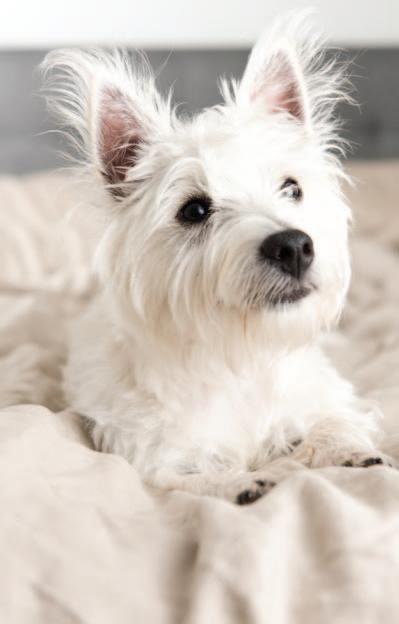
Editor’s Note: Carolina Tails Magazine would not be possible if it weren’t for the support of our many advertisers. We hope you enjoy this profile of one of our advertisers and we look forward to bringing your more Advertiser Spotlights in the future. Please support the businesses you see in Carolina Tails!
BY HELEN RAVENEL HAMMOND
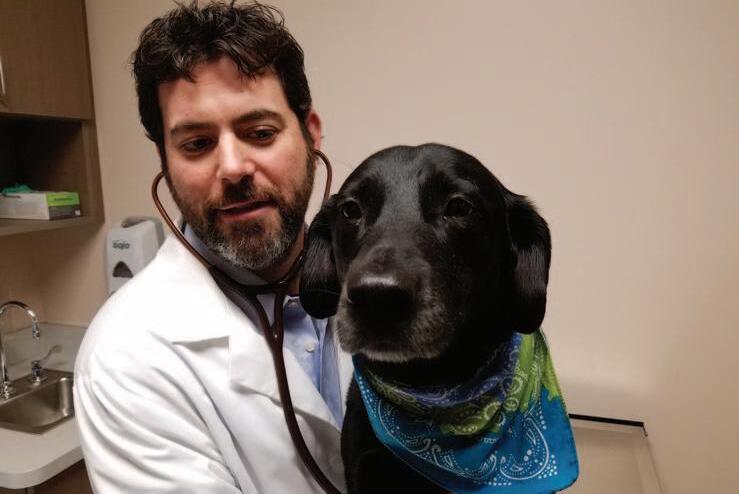
WHEN AN EMERGENCY HAPPENS concerning your beloved pet, every minute counts. And sometimes there are needs that go well beyond what your veterinarian can do. That’s why there is Charleston Veterinary Referral Center (CVRC), one of the most advanced specialty and emergency, small animal hospitals in the Southeast. Patients are primarily injured and ill dogs and cats that are in dire circumstances.
“Our role is to serve as an extension of your family veterinarian’s practice in the event of complex medical or surgical issues, and to be a valuable resource for any type of pet emergency, any time, day or night,” explained Dr. David Sachs, co-owner and medical director. “Everything we deal with is significant. We are the people you never want to see, but you are happy to have us in case of an emergency.”
Opened in 2011 by Sachs and Dr. Alan Green, Charleston Veterinary Referral
Center is nearly 18,000 square feet with 85 full-time staff members and 19 full-time doctors.
Specialties include emergency medicine, critical care, internal medicine, cardiology, neurology, oncology, surgery, physical rehabilitation, and sports medicine. “Since we rely on a referral basis,” said Dr. Sachs, “we want to be ‘the best in the business’— ensuring exceptional client experie nce. Essentially, the referring vets are our clients.”
"In an emergency situation, we have about two minutes to introduce ourselves and get the patients to trust us. There are processes and protocols we go through," Dr. Sachs explained.
Consider Lucy, an 8-year-old Labrador. Taken to Dr. Linnea Bredenberg at Riverbank Veterinary Clinic because of constant vomiting and diarrhea, Lucy's heart rate was less than 40 bpm. With a conclusion that the severe bradycardia was
most likely causing Lucy’s clinical signs, Dr. Bredenberg recognized the need for rapid intervention. Lucy was referred directly to Charleston Veterinary Referral Center, where she would receive 24-hour monitoring and an evaluation with CVRC’s cardiology department. After extensive diagnostics and lab work, as well as direction and discussion with Dr. Sophy Jesty, DVM, DACVIM (Cardiology), a pacemaker was put in.
“The staff was very attentive to her needs, and the hospital called us with updates multiple times per day,” recalled David Jacobstein, Lucy’s owner.
“When we took her home, we were given a mission to rest her, and we took that so seriously,” Holly Jacobstein added. “We called in three times the first day and every time, they got right on the phone and answered our questions.”
According to Dr. Sachs, “This is the example of a positive outcome to a lifethreatening situation with that low of a heart-rate. They said, 'We got our puppy back.'"
Roughly 10-12 doctors participate in university style rounds, including everyone from the cardiologists to the oncologists. "Everyone weighs in on what care we can offer to every single pet that comes through our doors. We want it to be a seamless process for the clients. We have referred to ourselves as the veterinary ‘Mayo Clinic,’” he said.
"We strive to be a ‘thought leader’ in the area for all things veterinary—providing education for vets and pet owners,” he continued. “Community outreach is equally important, and CVRC sponsors James Island County Park, Dogtoberfest, Bark for Life, Keep Charleston Beautiful and Running with the Hounds, to name a few.”
It’s a brand new year and time to jump into 2017 with both feet and four new paws! Please make it a New Year’s Resolution to come see Charleston Animal Society and adopt or foster one of our pets. You can visit Charleston Animal Society at 2455 Remount Road in North Charleston or go online to: www.CharlestonAnimalSociety.org. Dog Photography: Jeanne Taylor / JTPetPics.com; Cat Photography: Marie Rodriguez / MarieRodriguezPhotography.com

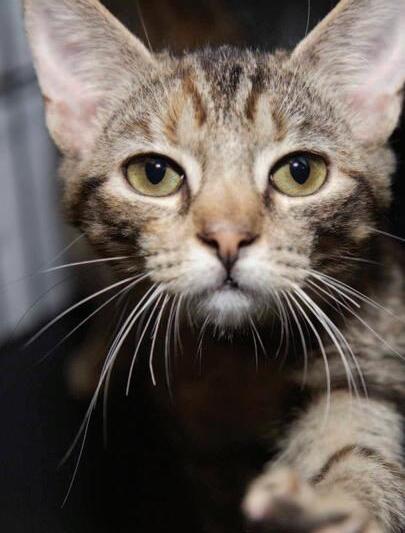

I really wish they’d give you a second chance at these pictures! I was just yelling “More catnip over here please” and click! Ask for Maybelline. I’m usually not this



I’m Daphne and am a bit of a
with a distinctive patch on my eye that goes with almost any color collar, although I do prefer pink.
BY ELLIE WHITCOMB PAYNE
The science behind a saltwater tank is a great way to let your children geek out (tech-free) this New Year. Guide them to find their inner genius by helping set up a private, underwater world.
LIKELY, YOUR MINI COUSTEAU WILL not set up an exhibit-style aquarium in your living room, but some lessons can still be learned from the experts downtown at the South Carolina Aquarium. When considering the type of animals you want to keep, think about developing a local ecosystem with native wildlife. Know the amount of space you will have for the tank and the filtration system, and be prepared to regulate all those cycles!
For the pros at the aquarium, setting up a saltwater tank is a thoughtful process. The specialists at the SC Aquarium recently opened the 20,000-gallon Shark Shallows. It took nearly two years of planning before the animals were even introduced. While your child will likely start with a 30-gallon tank, many of the basic principles of managing the ecosystem are the same, no matter the size. Chris Mathews, Life Support and Water Quality Specialist with SC Aquarium, explains that the careful attention paid to creating a natural setting not only benefits the health of the animal but educates visitors about South Carolina’s local wildlife. “An aquarium is not just about the fish,” says Mathews. “We're actually trying to mimic a natural setting and the cycles that appear in nature.”
A saltwater tank must imitate multiple biogeochemical and ecological cycles to survive. The specifics of these processes cover the spectrum of science. What happens to fish feces? Why should I have plants in my tank? Will my fish have babies? Why does my tank need oxygen? Achieving and maintaining the right balance requires the young aquarist to have a quizzical mind and act as part chemist, part biologist, part ecologist. Mathews suggests you also consider animal enrichment—even fish benefit from a break in routine. Can someone say “fish tricks”?
When you’re ready, Tideline Aquatics in Hanahan can help you set up your own little piece of salt life. Store Manager Shawn Edgin suggests this starter set for the burgeoning enthusiast:
• 30-gallon tank: Large enough to support a stable ecosystem and small enough to stay affordable
• Canister filter: Simple hose - in, hoseout filter with a built-in pump combined with chemical, biological and mechanical media
• Glass top: To keep jumping fish species in the tank
• Standard lighting: LED or fluorescent options
• Sturdy stand: One gallon of water weighs 8.5 pounds
• Substrate: An aragonite substrate (sand or gravel) buffers the pH and stabilizes the alkalinity
• Desired decoration: The store will have suggestions for those appropriate for saltwater
• Marine aquarium salt: Add to local tap water after treating with a water conditioner
• Hydrometer: Measures salt level
• Aquarium Heater: To stabilize temperature
• Damselfish: Hardy and cheap, they make great starter fish
• Test kit: Monitor water quality
• Lab coat: Just for effect
So if you’re ready, expert advice is available all around town to help get your family back to nature with a window into an underwater world.
Every year, 450,000 kids and adults marvel at the stunning, natural exhibits showcased at the South Carolina Aquarium in downtown Charleston. If you take a minute to understand the effort behind the beauty, the displays become even more awesome. The stated vision of the SC Aquarium is to “lead the way to connect people with water, wildlife, and wild places” in an educational and inspirational manner. On the surface, it may look at first like just a collection of fish tanks, but behind-the-scenes is teeming with scientific monitoring, rehabilitation, and discovery. The SC Aquarium is always worth a visit at 100 Aquarium Wharf, Charleston, SC 29401.

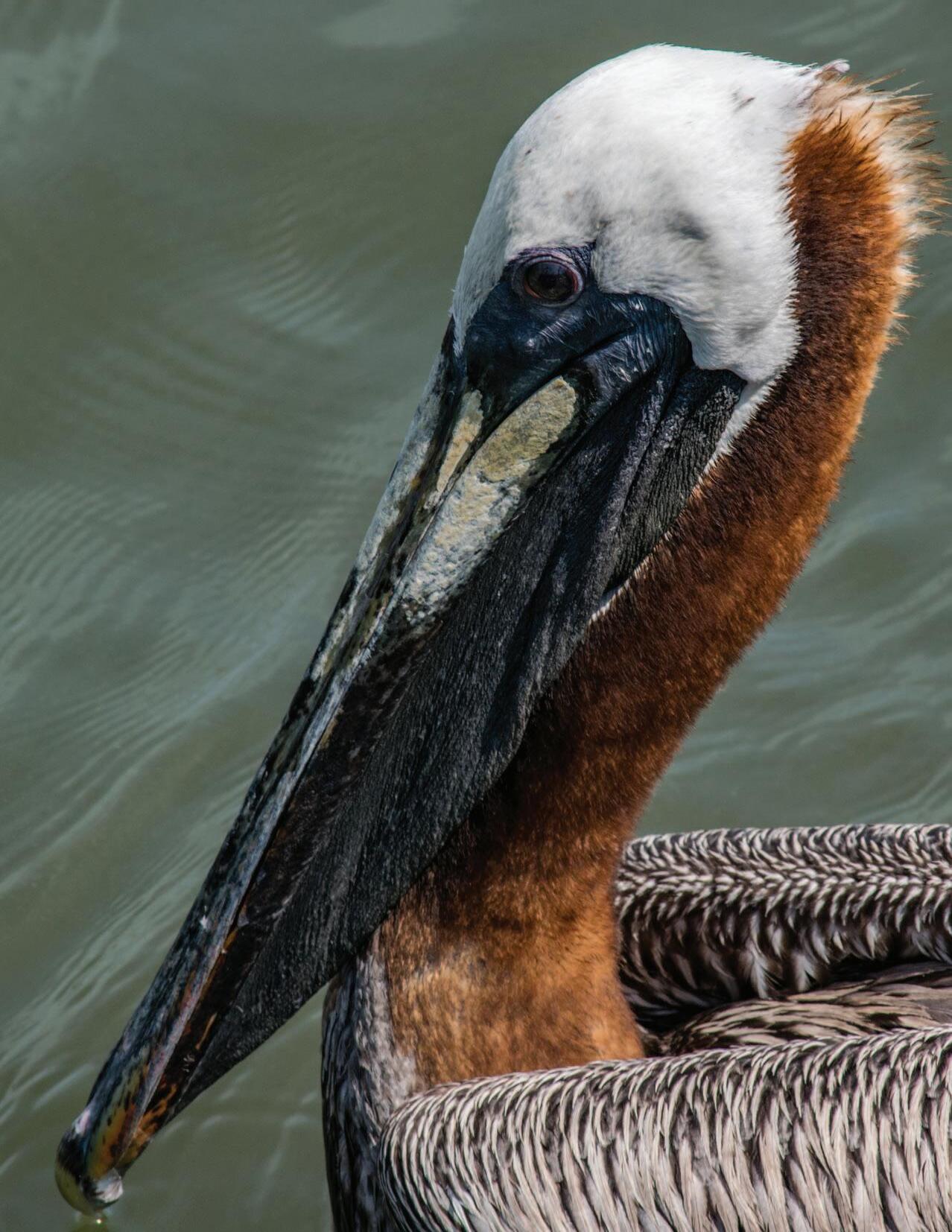
BY TERI ERRICO GRIFFIS
LIVING IN THE LOWCOUNTRY MEANS ENJOYING TWO THINGS YEAR ROUND: COASTAL VIEWS AND IDEAL WEATHER. BOTH OF THESE LUXURIES MAKE IT A PERFECT PLACE FOR BIRD WATCHING. WHETHER YOU’VE BEEN OBSERVING FOR YEARS OR WANT TO GET STARTED, NOLAN SCHILLERSTROM, COASTAL PROGRAM COORDINATOR WITH THE AUDUBON SOCIETY, PROVIDES ALL THE TIPS YOU NEED! YOUR ONLY REQUIREMENTS ARE A SET OF BINOCULARS AND THE LOVE OF A GOOD WALK.
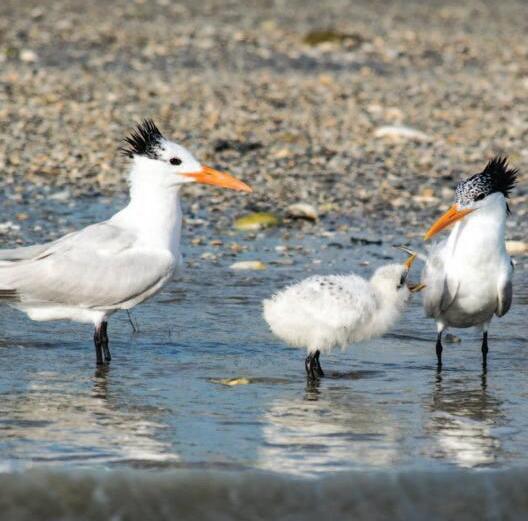
As you head out to discover all the beautiful types of birds found in our area, binoculars will be your best companion If you don’t have a pair, consider borrowing a set to start out—or even better, join one of the Audubon Society’s Bird Walks and they’ll provide you a pair for free. (Most walks are also free!) Schillerstrom highly recommends joining a Bird Walk to learn the basics. A beginner will get the scoop on bird watching rules and what birds are popular in your particular area.
While any time of year is a wonderful time to bird watch, beginners should pick up their new hobby in springtime. “You’re going to see a lot of amazing birds and they’re going to be in their very recognizable breeding plumage in spring,” Schillerstrom explains, noting birds cycle through different sets of feathers depending on the time of year. In the fall, birds lose their iconic breeding feathers and change into their wintering feathers, which are less colorful. This occasionally makes them hard to distinguish. Depending on where you go to bird watch will then determine what types of birds you find. “I spend most of my time on the coast so there are some really iconic birds that you wouldn’t see elsewhere: American Oyster Catchers, Black Skimmers, Brown Pelicans,” Schillerstrom says. “We really are lucky to have a wide variety of birds. And they connect us with every other state and country because they’re world travelers, going in and out of South Carolina each year.”
In addition to South Carolina being a host for well-traveled birds, the state also has a number of great natural areas from which to observe them. If you’re looking for shore birds, the easiest and most accessible place is the Pitt Street causeway in Mt. Pleasant at low tide. Another prime location during spring, fall and summer is the Audubon Society’s Nature Center and Sanctuary in Harleyville. You could also visit any number of county parks, such as Caw Caw or the Francis Marion National Forest. “We’re surrounded by places. Go on a map and anywhere you see green is probably a decent place for birding,” Schillerstrom says.
You could even go to the beach! The Audubon Society’s Shorebird Stewardship is a way to beach with a purpose—for the
birds. All it requires is a short training and signing up to volunteer for a couple days during the spring and summer. Shorebird Stewards head to the beaches that have nesting birds or birds that are migrating through South Carolina and have stopped over. They set up shade, or if there’s already shade, they act as beach educators. “A lot of people don’t know about shorebirds that nest and rest on our beaches and it’s really, really important that we leave enough space between us and these birds or else they might not make it through migration or nesting,” Schillerstrom says.
These birds, while durable, are extremely fragile to human disturbance and we can do a lot of harm without really knowing it, Schillerstrom explains. Expert bird watchers will even learn how to identify bird nests, which aren’t typical twigs and sand. Rather, they are a little scrape in the sand, sometimes an inch or two deep. Not only are the nests hard to find, but so are the eggs and hatched chicks, which are speckled and sandy-colored to camouflage into their surroundings. “One mistake for humans is people stepping on the nests or coming too close without noticing because you really can’t see them,” Schillerstrom says. This could result in the parents’ leaving the nest to lure you, a predator, away. The eggs are then endangered by being exposed to natural predators or the hot sun, which can fry them in a matter of minutes.
In addition to all of the Audubon Society’s bird watching opportunities, Charleston County Park’s Master Naturalist class is another great resource. The 12-day course, which you can register for starting January 1, is for adults of all ages who want to better understand and protect the rich natural resources of South Carolina.
At the end of the day, the best way to start is just to go and walk and explore. Says Schillerstrom, “We work [at the Audubon Society] because we know a lot about birds and we love telling people about them. So that’s the best way to start learning.” And there really is so much to learn and see here in the Lowcountry.

A BIRD WALK NEWBIE? HERE'S WHAT YOU'LL NEED:
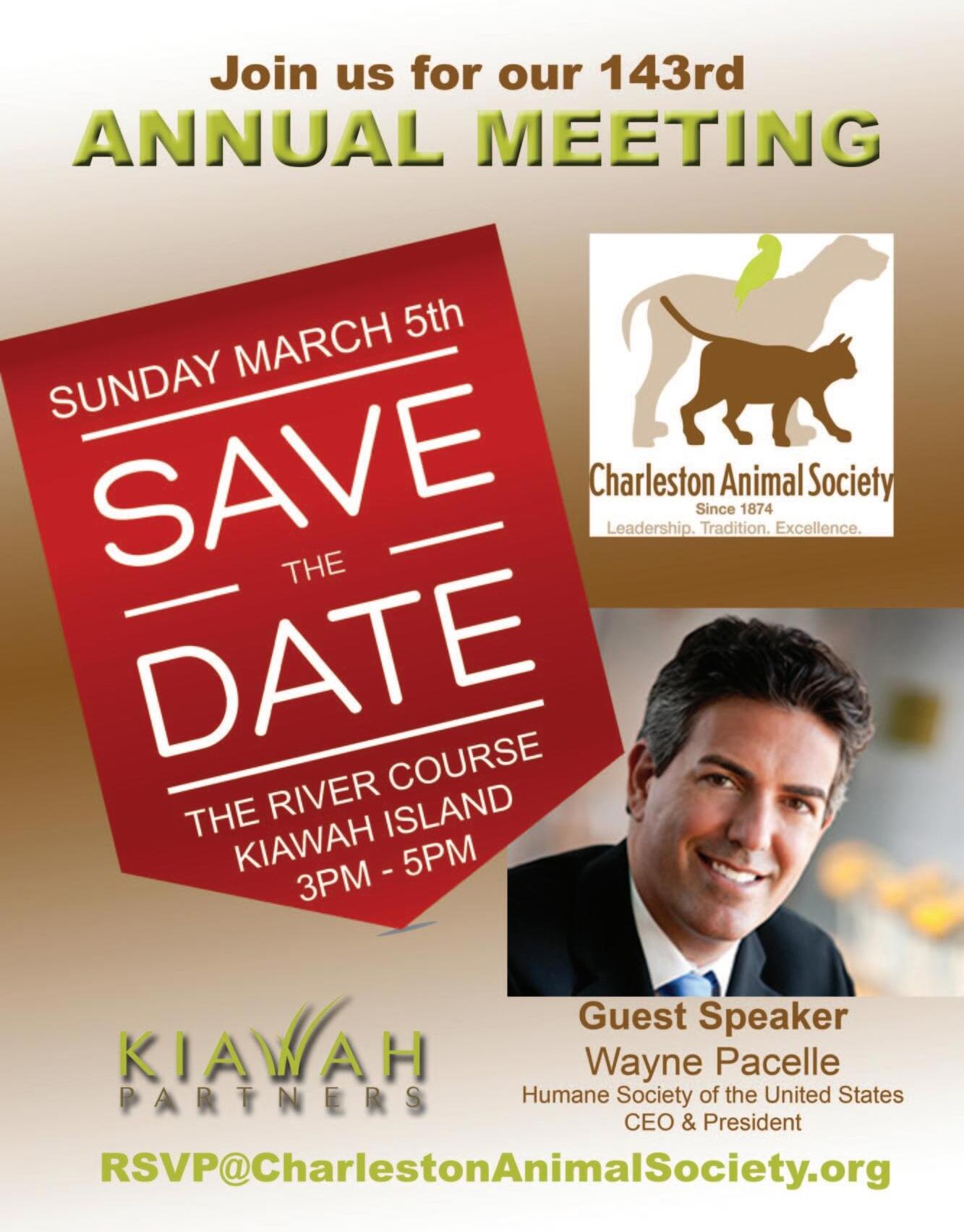

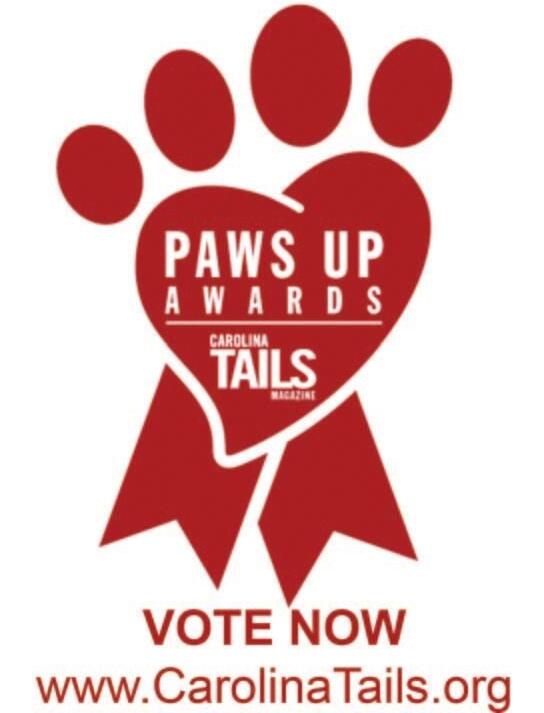

Kids are some of the best animal advocates so we’ve devoted this space to young pet lovers.
